Miller Electric Welder User Manual
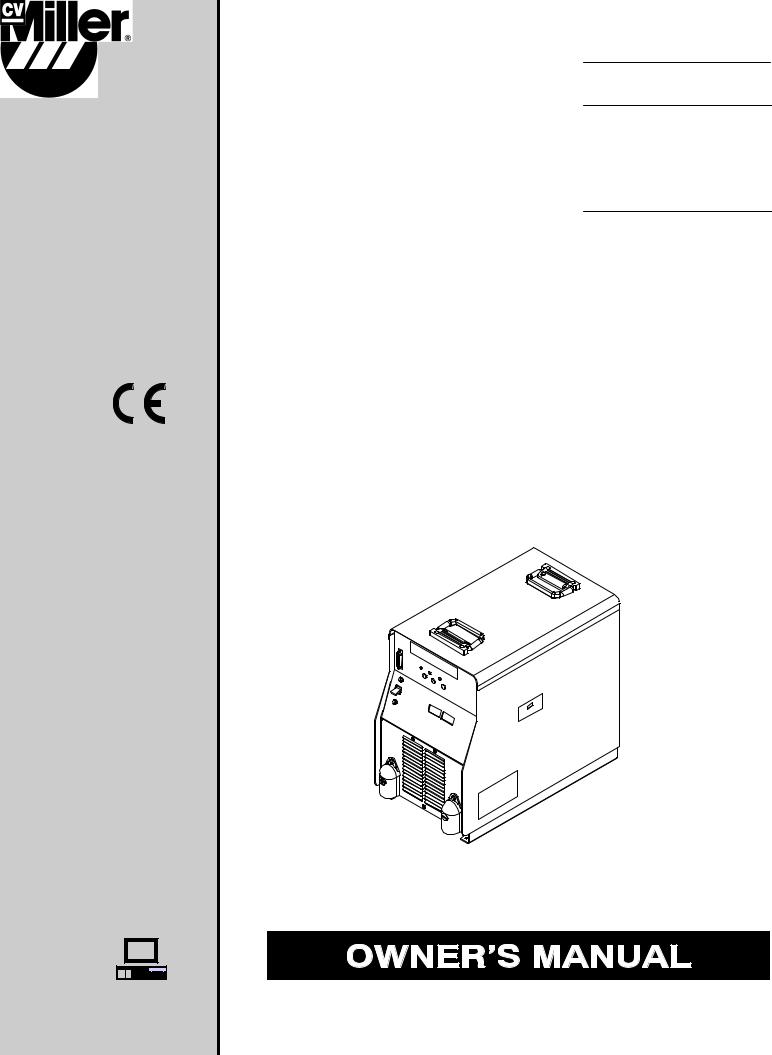
OM-196 188K
July 2003
Processes
MIG (GMAW) Welding
Pulsed MIG (GMAW-P)
Flux Cored (FCAW) Welding
Automatic Welding
Description
Automatic Welding Interface And
Arc Welding Power Source
Operating Instructions and
Programming Instructions for
Auto Invision II
Visit our website at
www.MillerWelds.com
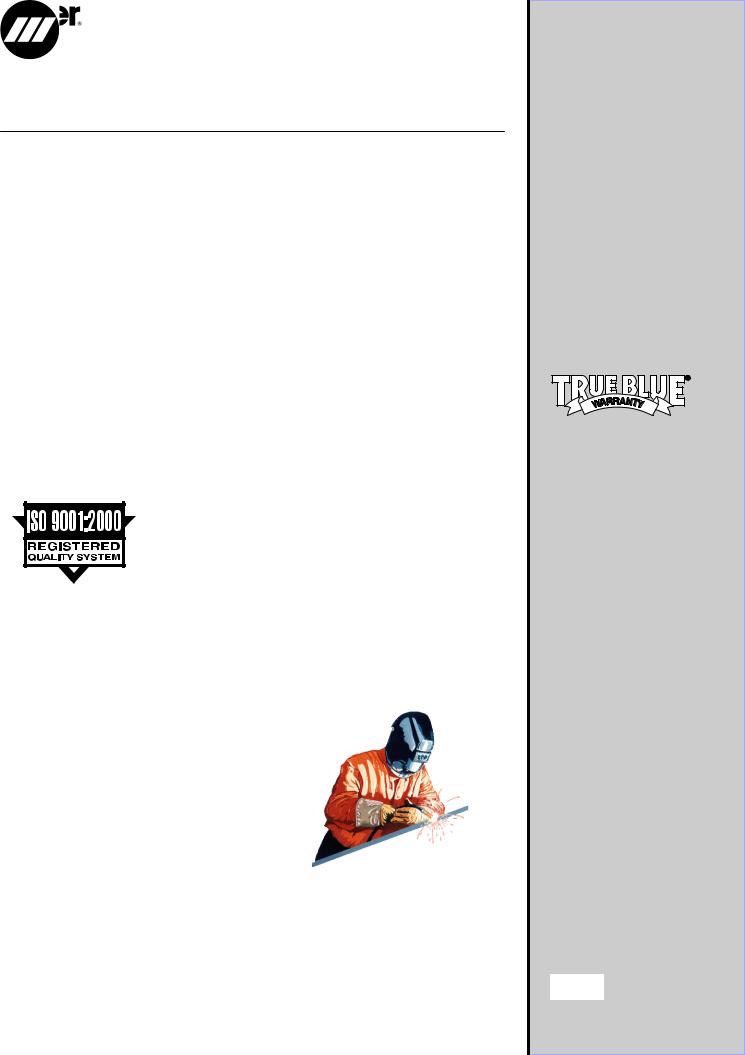
From Miller to You
Thank you and congratulations on choosing Miller. Now you can get the job done and get it done right. We know you don’t have time to do it any other way.
That’s why when Niels Miller first started building arc welders in 1929, he made sure his products offered long-lasting value and superior quality. Like you, his customers couldn’t afford anything less. Miller products had to be more than the best they could be. They had to be the best you could buy.
Today, the people that build and sell Miller products continue the tradition. They’re just as committed to providing equipment and service that meets the high standards of quality and value established in 1929.
This Owner’s Manual is designed to help you get the most out of your Miller products. Please take time to read the Safety precautions. They will help you protect yourself against potential hazards on the worksite.
We’ve made installation and operation quick and easy. With Miller you can count on years of reliable service with proper maintenance.
And if for some reason the unit needs repair, there’s a Troubleshooting section that will help you figure out what the problem is. The parts list will then help you to decide the exact part you may need to fix the problem. Warranty and service information for your particular model are also provided.
Miller Electric manufactures a full line
of welders and welding related equipment. For information on other quality Miller
products, contact your local Miller distributor to receive the latest full line catalog or individual catalog sheets. To locate your nearest distributor or service agency call 1-800-4-A-Miller, or visit us at www.MillerWelds.com on the web.
Working as hard as you do
– every power source from Miller is backed by the most hassle-free warranty in the business.
Miller offers a Technical Manual which provides more detailed service and parts information for your unit. To obtain a Technical Manual, contact your local distributor. Your distributor can also supply you with Welding Process Manuals such as SMAW, GTAW,
GMAW, and GMAW-P.
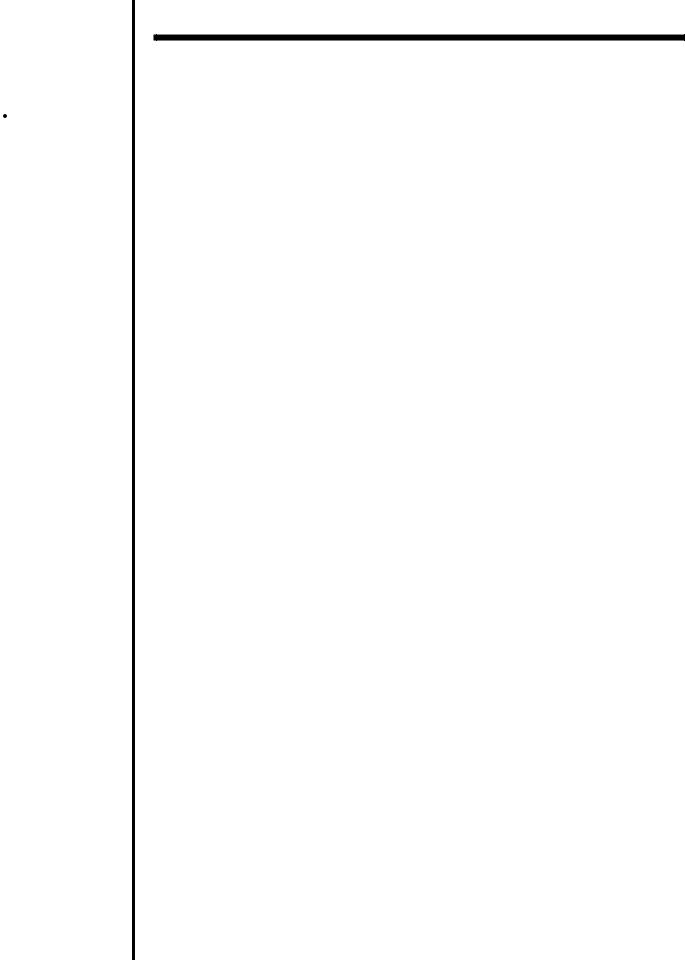
 WARNING
WARNING
This product, when used for welding or cutting, produces fumes or gases which contain chemicals known to the State of California to cause birth defects and, in some cases, cancer. (California Health & Safety Code Section 25249.5 et seq.)
TABLE OF CONTENTS
SECTION 1 – SAFETY PRECAUTIONS - READ BEFORE USING . . . . . . . . . . . . . . . . . . . . . . . . . . . . |
1 |
|
1-1. |
Symbol Usage . . . . . . . . . . . . . . . . . . . . . . . . . . . . . . . . . . . . . . . . . . . . . . . . . . . . . . . . . . . . . . . . |
1 |
1-2. |
Arc Welding Hazards . . . . . . . . . . . . . . . . . . . . . . . . . . . . . . . . . . . . . . . . . . . . . . . . . . . . . . . . . . |
1 |
1-3. |
Additional Symbols For Installation, Operation, And Maintenance . . . . . . . . . . . . . . . . . . . . . |
3 |
1-4. |
Principal Safety Standards . . . . . . . . . . . . . . . . . . . . . . . . . . . . . . . . . . . . . . . . . . . . . . . . . . . . . . |
3 |
1-5. |
EMF Information . . . . . . . . . . . . . . . . . . . . . . . . . . . . . . . . . . . . . . . . . . . . . . . . . . . . . . . . . . . . . . |
4 |
SECTION 1 – CONSIGNES DE SECURITE – LIRE AVANT UTILISATION . . . . . . . . . . . . . . . . . . . . . |
5 |
|
1-1. |
Signification des symboles . . . . . . . . . . . . . . . . . . . . . . . . . . . . . . . . . . . . . . . . . . . . . . . . . . . . . . |
5 |
1-2. |
Dangers relatifs au soudage à l’arc . . . . . . . . . . . . . . . . . . . . . . . . . . . . . . . . . . . . . . . . . . . . . . . |
5 |
1-3. |
Dangers supplémentaires en relation avec l’installation, le fonctionnement |
|
|
et la maintenance . . . . . . . . . . . . . . . . . . . . . . . . . . . . . . . . . . . . . . . . . . . . . . . . . . . . . . . . . . . . . . |
7 |
1-4. |
Principales normes de sécurité . . . . . . . . . . . . . . . . . . . . . . . . . . . . . . . . . . . . . . . . . . . . . . . . . . |
8 |
1-5. |
Information sur les champs électromagnétiques . . . . . . . . . . . . . . . . . . . . . . . . . . . . . . . . . . . . |
8 |
SECTION 2 – DEFINITIONS . . . . . . . . . . . . . . . . . . . . . . . . . . . . . . . . . . . . . . . . . . . . . . . . . . . . . . . . . . . . |
9 |
|
2-1. |
Manufacturer’s Warning Label Definitions . . . . . . . . . . . . . . . . . . . . . . . . . . . . . . . . . . . . . . . . . |
9 |
2-2. |
Symbols And Definitions . . . . . . . . . . . . . . . . . . . . . . . . . . . . . . . . . . . . . . . . . . . . . . . . . . . . . . . |
11 |
2-3. |
Manufacturer’s Rating Label . . . . . . . . . . . . . . . . . . . . . . . . . . . . . . . . . . . . . . . . . . . . . . . . . . . . |
11 |
2-4. |
Harmonic Data . . . . . . . . . . . . . . . . . . . . . . . . . . . . . . . . . . . . . . . . . . . . . . . . . . . . . . . . . . . . . . . |
11 |
SECTION 3 – INSTALLATION . . . . . . . . . . . . . . . . . . . . . . . . . . . . . . . . . . . . . . . . . . . . . . . . . . . . . . . . . . . |
12 |
|
3-1. |
Specifications . . . . . . . . . . . . . . . . . . . . . . . . . . . . . . . . . . . . . . . . . . . . . . . . . . . . . . . . . . . . . . . . |
12 |
3-2. |
Dimensions And Weight . . . . . . . . . . . . . . . . . . . . . . . . . . . . . . . . . . . . . . . . . . . . . . . . . . . . . . . . |
12 |
3-3. |
Selecting A Location . . . . . . . . . . . . . . . . . . . . . . . . . . . . . . . . . . . . . . . . . . . . . . . . . . . . . . . . . . . |
13 |
3-4. |
Connection Diagram . . . . . . . . . . . . . . . . . . . . . . . . . . . . . . . . . . . . . . . . . . . . . . . . . . . . . . . . . . . |
13 |
3-5. |
Weld Output Terminals And Selecting Cable Sizes . . . . . . . . . . . . . . . . . . . . . . . . . . . . . . . . . . |
14 |
3-6. |
115 Volts AC Duplex Receptacle And Circuit Breakers . . . . . . . . . . . . . . . . . . . . . . . . . . . . . . |
14 |
3-7. |
Electrical Service Guide . . . . . . . . . . . . . . . . . . . . . . . . . . . . . . . . . . . . . . . . . . . . . . . . . . . . . . . . |
15 |
3-8. |
Connecting Input Power . . . . . . . . . . . . . . . . . . . . . . . . . . . . . . . . . . . . . . . . . . . . . . . . . . . . . . . . |
15 |
3-9. |
Rear Panel Connections . . . . . . . . . . . . . . . . . . . . . . . . . . . . . . . . . . . . . . . . . . . . . . . . . . . . . . . |
16 |
3-10. |
Peripheral Receptacle Functions . . . . . . . . . . . . . . . . . . . . . . . . . . . . . . . . . . . . . . . . . . . . . . . . |
17 |
3-11. |
Touch Sensor Operation . . . . . . . . . . . . . . . . . . . . . . . . . . . . . . . . . . . . . . . . . . . . . . . . . . . . . . . . |
18 |
3-12. |
Touch Sensor Board PC18 Switch S1 Settings . . . . . . . . . . . . . . . . . . . . . . . . . . . . . . . . . . . . . |
18 |
3-13. |
Connecting Setup Pendant To Welding Power Source . . . . . . . . . . . . . . . . . . . . . . . . . . . . . . . |
19 |
SECTION 4 – OPERATION . . . . . . . . . . . . . . . . . . . . . . . . . . . . . . . . . . . . . . . . . . . . . . . . . . . . . . . . . . . . . |
20 |
|
4-1. |
Operational Terms . . . . . . . . . . . . . . . . . . . . . . . . . . . . . . . . . . . . . . . . . . . . . . . . . . . . . . . . . . . . . |
20 |
4-2. |
Lower Front Panel Controls . . . . . . . . . . . . . . . . . . . . . . . . . . . . . . . . . . . . . . . . . . . . . . . . . . . . . |
21 |
4-3. |
Meter Functions . . . . . . . . . . . . . . . . . . . . . . . . . . . . . . . . . . . . . . . . . . . . . . . . . . . . . . . . . . . . . . |
21 |
4-4. |
Upper Front Panel Controls . . . . . . . . . . . . . . . . . . . . . . . . . . . . . . . . . . . . . . . . . . . . . . . . . . . . . |
22 |
4-5. |
Duty Cycle And Overheating . . . . . . . . . . . . . . . . . . . . . . . . . . . . . . . . . . . . . . . . . . . . . . . . . . . . |
23 |
4-6. |
Volt-Ampere Curves . . . . . . . . . . . . . . . . . . . . . . . . . . . . . . . . . . . . . . . . . . . . . . . . . . . . . . . . . . . |
23 |
4-7. |
Setup Pendant Controls . . . . . . . . . . . . . . . . . . . . . . . . . . . . . . . . . . . . . . . . . . . . . . . . . . . . . . . . |
24 |
SECTION 5 – MAINTENANCE & TROUBLESHOOTING . . . . . . . . . . . . . . . . . . . . . . . . . . . . . . . . . . . . |
25 |
|
5-1. |
Routine Maintenance . . . . . . . . . . . . . . . . . . . . . . . . . . . . . . . . . . . . . . . . . . . . . . . . . . . . . . . . . . |
25 |
5-2. |
Blowing Out Inside Of Unit . . . . . . . . . . . . . . . . . . . . . . . . . . . . . . . . . . . . . . . . . . . . . . . . . . . . . . |
25 |
5-3. |
Removing Case and Measuring Input Capacitor Voltage . . . . . . . . . . . . . . . . . . . . . . . . . . . . . |
26 |
5-4. |
Voltmeter/Ammeter Help Displays . . . . . . . . . . . . . . . . . . . . . . . . . . . . . . . . . . . . . . . . . . . . . . . . |
27 |
5-5. |
Front Panel Error Displays . . . . . . . . . . . . . . . . . . . . . . . . . . . . . . . . . . . . . . . . . . . . . . . . . . . . . . |
28 |
5-6. |
Weld Interface Board PC12 Diagnostic LED’s . . . . . . . . . . . . . . . . . . . . . . . . . . . . . . . . . . . . . . |
29 |
5-7. |
Diagnostic LED’s On Weld Interface Board PC12 . . . . . . . . . . . . . . . . . . . . . . . . . . . . . . . . . . . |
30 |
5-8. |
Customer Interface Board PC14 Diagnostic LED’s . . . . . . . . . . . . . . . . . . . . . . . . . . . . . . . . . . |
31 |
5-9. |
Diagnostic LED’s On Customer Interface Board PC14 . . . . . . . . . . . . . . . . . . . . . . . . . . . . . . . |
32 |
5-10. Motor Board PC13 Diagnostic LED’s . . . . . . . . . . . . . . . . . . . . . . . . . . . . . . . . . . . . . . . . . . . . . |
33 |
|
5-11. |
Diagnostic LED’s On Motor Board PC13 . . . . . . . . . . . . . . . . . . . . . . . . . . . . . . . . . . . . . . . . . . |
34 |
5-12. |
Troubleshooting. . . . . . . . . . . . . . . . . . . . . . . . . . . . . . . . . . . . . . . . . . . . . . . . . . . . . . . . . . . . . . . |
34 |
SECTION 6 – ELECTRICAL DIAGRAMS . . . . . . . . . . . . . . . . . . . . . . . . . . . . . . . . . . . . . . . . . . . . . . . . . |
36 |
|
SECTION 7 – PARTS LIST . . . . . . . . . . . . . . . . . . . . . . . . . . . . . . . . . . . . . . . . . . . . . . . . . . . . . . . . . . . . . . |
70 |
|
(continued)

TABLE OF CONTENTS
SECTION 8 – INTRODUCTION TO PROGRAMMING . . . . . . . . . . . . . . . . . . . . . . . . . . . . . . . . . . . . . . . 76
8-1. |
Pulse MIG Programs . . . . . . . . . . . . . . . . . . . . . . . . . . . . . . . . . . . . . . . . . . . . . . . . . . . . . . . . . . |
76 |
8-2. |
Standard Pulse Welding Programs . . . . . . . . . . . . . . . . . . . . . . . . . . . . . . . . . . . . . . . . . . . . . . . |
76 |
8-3. |
Program 1 – 1.2 mm Steel (.045”), 98-2 Argon-Oxy . . . . . . . . . . . . . . . . . . . . . . . . . . . . . . . . . |
77 |
8-4. |
Program 2 – 1.0 mm Steel (.040”), 80-20 Argon-CO2 . . . . . . . . . . . . . . . . . . . . . . . . . . . . . . . . |
77 |
8-5. |
Program 3 – 1.2 mm Steel (.045”), 80-20 Argon-CO2 . . . . . . . . . . . . . . . . . . . . . . . . . . . . . . . . |
78 |
8-6. |
Program 4 – .8 mm 316 (.030”), 98-2 Argon-CO2 . . . . . . . . . . . . . . . . . . . . . . . . . . . . . . . . . . . |
78 |
8-7. |
Program 5 – 1.0 mm 316 (.040”), 98-2 Argon-CO2 . . . . . . . . . . . . . . . . . . . . . . . . . . . . . . . . . . |
79 |
8-8. |
Program 6 – 1.2 mm 316 (.045”), 98-2 Argon-CO2 . . . . . . . . . . . . . . . . . . . . . . . . . . . . . . . . . . |
79 |
8-9. |
Program 7 – 1.0 mm 308L (.040”), 98-2 Argon-CO2 . . . . . . . . . . . . . . . . . . . . . . . . . . . . . . . . . |
80 |
8-10. |
Program 8 – 1.2 mm 308L (.045”), 98-2 Argon-CO2 . . . . . . . . . . . . . . . . . . . . . . . . . . . . . . . . . |
80 |
8-11. |
Program 1 – 1.2 mm Metal Core (.045”), 95-5 Argon-CO2 . . . . . . . . . . . . . . . . . . . . . . . . . . . . |
81 |
8-12. |
Program 2 – 1.4 mm Metal Core (.052”), 95-5 Argon-CO2 . . . . . . . . . . . . . . . . . . . . . . . . . . . . |
81 |
8-13. |
Program 3 – 1.2 mm ER 4043 (.045”), Argon . . . . . . . . . . . . . . . . . . . . . . . . . . . . . . . . . . . . . . |
82 |
8-14. |
Program 4 – 1.0 mm ER 4043 (.040”), Argon . . . . . . . . . . . . . . . . . . . . . . . . . . . . . . . . . . . . . . |
82 |
8-15. |
Program 5 – 1.0 mm 5356 (.040”), Argon . . . . . . . . . . . . . . . . . . . . . . . . . . . . . . . . . . . . . . . . . . |
83 |
8-16. |
Program 6 – 1.2 mm ER 5356 (.045”), Argon . . . . . . . . . . . . . . . . . . . . . . . . . . . . . . . . . . . . . . |
83 |
8-17. |
Program 7 – .8 mm Steel (.030”), 98-2 Argon-Oxy . . . . . . . . . . . . . . . . . . . . . . . . . . . . . . . . . . |
84 |
8-18. |
Program 8 – 1.0 mm Steel (.040”), 98-2 Argon-Oxy . . . . . . . . . . . . . . . . . . . . . . . . . . . . . . . . . |
84 |
8-19. |
Setup Pendant Mode Select Button . . . . . . . . . . . . . . . . . . . . . . . . . . . . . . . . . . . . . . . . . . . . . . |
85 |
8-20. |
Setup Pendant Parameter Select Button . . . . . . . . . . . . . . . . . . . . . . . . . . . . . . . . . . . . . . . . . . |
86 |
8-21. |
Setup Pendant Parameter Increase And Decrease Buttons . . . . . . . . . . . . . . . . . . . . . . . . . . |
87 |
SECTION 9 – GETTING STARTED FOR PULSE WELDING . . . . . . . . . . . . . . . . . . . . . . . . . . . . . . . . . |
88 |
|
9-1. Weld Cycle For Pulse Welding . . . . . . . . . . . . . . . . . . . . . . . . . . . . . . . . . . . . . . . . . . . . . . . . . . |
88 |
|
9-2. |
Setting Preflow Sequence Display . . . . . . . . . . . . . . . . . . . . . . . . . . . . . . . . . . . . . . . . . . . . . . . |
88 |
9-3. |
Setting Weld Sequence Display . . . . . . . . . . . . . . . . . . . . . . . . . . . . . . . . . . . . . . . . . . . . . . . . . |
89 |
9-4. |
Setting Crater Sequence Display . . . . . . . . . . . . . . . . . . . . . . . . . . . . . . . . . . . . . . . . . . . . . . . . |
89 |
9-5. |
Setting Postflow Sequence Display . . . . . . . . . . . . . . . . . . . . . . . . . . . . . . . . . . . . . . . . . . . . . . |
90 |
SECTION 10 – TEACHING A PULSE WELDING PROGRAM . . . . . . . . . . . . . . . . . . . . . . . . . . . . . . . . |
90 |
|
10-1. |
Pulse Waveform Explained . . . . . . . . . . . . . . . . . . . . . . . . . . . . . . . . . . . . . . . . . . . . . . . . . . . . . |
90 |
10-2. |
Teach Points Explained . . . . . . . . . . . . . . . . . . . . . . . . . . . . . . . . . . . . . . . . . . . . . . . . . . . . . . . . |
91 |
10-3. |
Selecting Teach Point Wire Feed Speed For Pulse Welding Program . . . . . . . . . . . . . . . . . . |
92 |
10-4. |
Setting Teach Point Parameters For Pulse Welding Program . . . . . . . . . . . . . . . . . . . . . . . . . |
93 |
10-5. |
Changing To Adaptive Pulse Welding . . . . . . . . . . . . . . . . . . . . . . . . . . . . . . . . . . . . . . . . . . . . . |
95 |
SECTION 11 – TEACHING A MIG WELDING PROGRAM . . . . . . . . . . . . . . . . . . . . . . . . . . . . . . . . . . . |
95 |
|
11-1. Weld Cycle For Mig Welding . . . . . . . . . . . . . . . . . . . . . . . . . . . . . . . . . . . . . . . . . . . . . . . . . . . . |
95 |
|
11-2. |
Changing To Mig Welding . . . . . . . . . . . . . . . . . . . . . . . . . . . . . . . . . . . . . . . . . . . . . . . . . . . . . . . |
96 |
11-3. |
Setting Preflow Sequence Display . . . . . . . . . . . . . . . . . . . . . . . . . . . . . . . . . . . . . . . . . . . . . . . |
96 |
11-4. |
Setting Start Sequence Display . . . . . . . . . . . . . . . . . . . . . . . . . . . . . . . . . . . . . . . . . . . . . . . . . . |
97 |
11-5. |
Setting Weld Sequence Display . . . . . . . . . . . . . . . . . . . . . . . . . . . . . . . . . . . . . . . . . . . . . . . . . |
97 |
11-6. |
Setting Crater Sequence Display . . . . . . . . . . . . . . . . . . . . . . . . . . . . . . . . . . . . . . . . . . . . . . . . |
98 |
11-7. |
Setting Retract Sequence Display . . . . . . . . . . . . . . . . . . . . . . . . . . . . . . . . . . . . . . . . . . . . . . . |
98 |
11-8. |
Setting Postflow Sequence Display . . . . . . . . . . . . . . . . . . . . . . . . . . . . . . . . . . . . . . . . . . . . . . |
99 |
11-9. |
Setting Run-in Sequence Display . . . . . . . . . . . . . . . . . . . . . . . . . . . . . . . . . . . . . . . . . . . . . . . . |
99 |
SECTION 12 – SETTING SharpArcE CONTROL . . . . . . . . . . . . . . . . . . . . . . . . . . . . . . . . . . . . . . . . . . . |
100 |
|
12-1. |
Selecting And Adjusting SharpArcE Control . . . . . . . . . . . . . . . . . . . . . . . . . . . . . . . . . . . . . . . |
100 |
SECTION 13 – USING THE OPTIONAL DATA CARD . . . . . . . . . . . . . . . . . . . . . . . . . . . . . . . . . . . . . . . |
101 |
|
13-1. |
Installing Data Card . . . . . . . . . . . . . . . . . . . . . . . . . . . . . . . . . . . . . . . . . . . . . . . . . . . . . . . . . . . |
101 |
13-2. |
Using The Data Card . . . . . . . . . . . . . . . . . . . . . . . . . . . . . . . . . . . . . . . . . . . . . . . . . . . . . . . . . . |
102 |
13-3. |
Naming Programs And Writing To Card . . . . . . . . . . . . . . . . . . . . . . . . . . . . . . . . . . . . . . . . . . . |
103 |
13-4. |
Reading From Card . . . . . . . . . . . . . . . . . . . . . . . . . . . . . . . . . . . . . . . . . . . . . . . . . . . . . . . . . . . |
104 |
13-5. |
Reading (Or Deleting) From An Empty Card . . . . . . . . . . . . . . . . . . . . . . . . . . . . . . . . . . . . . . . |
105 |
13-6. |
Deleting Programs From Card . . . . . . . . . . . . . . . . . . . . . . . . . . . . . . . . . . . . . . . . . . . . . . . . . . . |
105 |
13-7. |
Selecting Security Lock . . . . . . . . . . . . . . . . . . . . . . . . . . . . . . . . . . . . . . . . . . . . . . . . . . . . . . . . |
106 |
(continued)

TABLE OF CONTENTS
SECTION 14 – SETUP . . . . . . . . . . . . . . . . . . . . . . . . . . . . . . . . . . . . . . . . . . . . . . . . . . . . . . . . . . . . . . . . . |
107 |
14-1. Setup Flow Chart . . . . . . . . . . . . . . . . . . . . . . . . . . . . . . . . . . . . . . . . . . . . . . . . . . . . . . . . . . . . . 107 14-2. Using Setup Displays . . . . . . . . . . . . . . . . . . . . . . . . . . . . . . . . . . . . . . . . . . . . . . . . . . . . . . . . . . 108 14-3. Selecting Or Changing Access Code . . . . . . . . . . . . . . . . . . . . . . . . . . . . . . . . . . . . . . . . . . . . . 109
14-4. Selecting Voltage Correction . . . . . . . . . . . . . . . . . . . . . . . . . . . . . . . . . . . . . . . . . . . . . . . . . . . . 110
14-5. Selecting Auxiliary Output . . . . . . . . . . . . . . . . . . . . . . . . . . . . . . . . . . . . . . . . . . . . . . . . . . . . . . 110 14-6. Selecting Voltage Sensing Method . . . . . . . . . . . . . . . . . . . . . . . . . . . . . . . . . . . . . . . . . . . . . . . 110 14-7. Selecting Arc Start Method . . . . . . . . . . . . . . . . . . . . . . . . . . . . . . . . . . . . . . . . . . . . . . . . . . . . . 111
14-8. Resetting Arc Time . . . . . . . . . . . . . . . . . . . . . . . . . . . . . . . . . . . . . . . . . . . . . . . . . . . . . . . . . . . . 111
14-9. Selecting Units For Wire Feed Speed And Motor Type . . . . . . . . . . . . . . . . . . . . . . . . . . . . . . . 112 14-10. Selecting Wire Type . . . . . . . . . . . . . . . . . . . . . . . . . . . . . . . . . . . . . . . . . . . . . . . . . . . . . . . . . . . 113 14-11. Defining Display Value . . . . . . . . . . . . . . . . . . . . . . . . . . . . . . . . . . . . . . . . . . . . . . . . . . . . . . . . . 113
14-12. Resetting Memory . . . . . . . . . . . . . . . . . . . . . . . . . . . . . . . . . . . . . . . . . . . . . . . . . . . . . . . . . . . . . 114
14-13. Selecting Arc Start/Volt Sense Error Shutdown . . . . . . . . . . . . . . . . . . . . . . . . . . . . . . . . . . . . . 114 14-14. Selecting Program Name Feature . . . . . . . . . . . . . . . . . . . . . . . . . . . . . . . . . . . . . . . . . . . . . . . . 115 14-15. Remote Program Select . . . . . . . . . . . . . . . . . . . . . . . . . . . . . . . . . . . . . . . . . . . . . . . . . . . . . . . . 115
14-16. Remote Program Setting . . . . . . . . . . . . . . . . . . . . . . . . . . . . . . . . . . . . . . . . . . . . . . . . . . . . . . . 115
14-17. Jog Wire Feed Speed Selection . . . . . . . . . . . . . . . . . . . . . . . . . . . . . . . . . . . . . . . . . . . . . . . . . 116 14-18. Flow Selection . . . . . . . . . . . . . . . . . . . . . . . . . . . . . . . . . . . . . . . . . . . . . . . . . . . . . . . . . . . . . . . . 116 14-19. Arc Voltage Error Selection . . . . . . . . . . . . . . . . . . . . . . . . . . . . . . . . . . . . . . . . . . . . . . . . . . . . . 117 14-20. Stick Check Selection . . . . . . . . . . . . . . . . . . . . . . . . . . . . . . . . . . . . . . . . . . . . . . . . . . . . . . . . . . 117
14-21. Setting Ramps Function . . . . . . . . . . . . . . . . . . . . . . . . . . . . . . . . . . . . . . . . . . . . . . . . . . . . . . . . 118
14-22. Software Version Number . . . . . . . . . . . . . . . . . . . . . . . . . . . . . . . . . . . . . . . . . . . . . . . . . . . . . . 118 14-23. Exiting The Setup Menu . . . . . . . . . . . . . . . . . . . . . . . . . . . . . . . . . . . . . . . . . . . . . . . . . . . . . . . . 118
SECTION 15 – CONTROL MENU . . . . . . . . . . . . . . . . . . . . . . . . . . . . . . . . . . . . . . . . . . . . . . . . . . . . . . . . 119
15-1. Using Menu Display . . . . . . . . . . . . . . . . . . . . . . . . . . . . . . . . . . . . . . . . . . . . . . . . . . . . . . . . . . . 119
15-2. Setting Rise Time Parameter . . . . . . . . . . . . . . . . . . . . . . . . . . . . . . . . . . . . . . . . . . . . . . . . . . . . 120
15-3. Setting Adaptive Parameters . . . . . . . . . . . . . . . . . . . . . . . . . . . . . . . . . . . . . . . . . . . . . . . . . . . . 120
15-4. Setting Auto Configure Parameter . . . . . . . . . . . . . . . . . . . . . . . . . . . . . . . . . . . . . . . . . . . . . . . . 121
15-5. Setting Retract On/Off . . . . . . . . . . . . . . . . . . . . . . . . . . . . . . . . . . . . . . . . . . . . . . . . . . . . . . . . . 122
15-6. Setting Sharp Start On/Off . . . . . . . . . . . . . . . . . . . . . . . . . . . . . . . . . . . . . . . . . . . . . . . . . . . . . . 122
15-7. Exiting The Control Menu . . . . . . . . . . . . . . . . . . . . . . . . . . . . . . . . . . . . . . . . . . . . . . . . . . . . . . . 123
OPTIONS AND ACCESSORIES
WARRANTY
Declaration of Conformity For
European Community (CE) Products
Manufacturer’s Name:
Manufacturer’s Address:
Declares that the product:
Miller Electric Mfg. Co.
1635 W. Spencer Street
Appleton, WI 54914 USA
Auto Invision II
conforms to the following Directives and Standards:
Directives
Electromagnetic compatibility Directives: 89/336/EEC, 92/31/EEC
Low Voltage Directive: 73/23/EEC
Machinery Directives: 89/392/EEC, 91/368/EEC, 93/C 133/04, 93/68/EEC
Standards
Electromagnetic compatibility (EMC) Product standard for arc welding equipment: EN50199: December 1995
Arc Welding Equipment part 1: CEI IEC 60974
Degrees of Protection provided by Enclosures (IP code): IEC 529: 1989
Draft IEC 60974-5 Arc Welding Equipment part 5: wire feeders JWG1 (Sec) 158 July 2000
Insulation coordination for equipment within low-voltage systems:
Part 1: Principles, requirements and tests: IEC 664-1: 1992
European Contact: Mr. Danilo Fedolfi, Managing Director ITW WELDING PRODUCTS ITALY S.r.l. Via Privata Iseo 6/E
20098 San Giuliano Milanese, Italy
Telephone: 39(02)982901
Fax: 39(02)98290–203
dec_con1_11/02
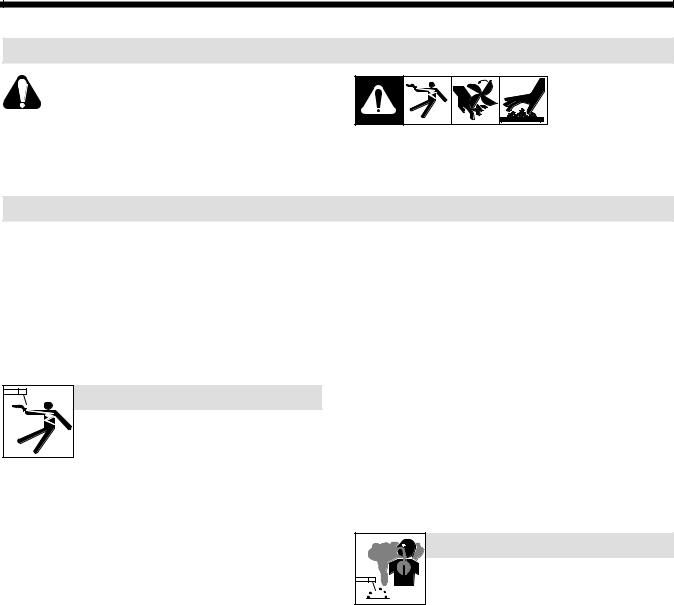
SECTION 1 – SAFETY PRECAUTIONS - READ BEFORE USING
som _nd_4/98
1-1. Symbol Usage
Means Warning! Watch Out! There are possible hazards with this procedure! The possible hazards are shown in the adjoining symbols.
Y Marks a special safety message.
. Means “Note”; not safety related.
This group of symbols means Warning! Watch Out! possible
ELECTRIC SHOCK, MOVING PARTS, and HOT PARTS hazards. Consult symbols and related instructions below for necessary actions to avoid the hazards.
1-2. Arc Welding Hazards
YThe symbols shown below are used throughout this manual to call attention to and identify possible hazards. When you see the symbol, watch out, and follow the related instructions to avoid the hazard. The safety information given below is only a summary of the more complete safety information found in the Safety Standards listed in Section 1-4. Read and follow all Safety Standards.
YOnly qualified persons should install, operate, maintain, and repair this unit.
YDuring operation, keep everybody, especially children, away.
ELECTRIC SHOCK can kill.
Touching live electrical parts can cause fatal shocks or severe burns. The electrode and work circuit is electrically live whenever the output is on. The input power circuit and machine internal circuits are also
live when power is on. In semiautomatic or automatic wire welding, the wire, wire reel, drive roll housing, and all metal parts touching the welding wire are electrically live. Incorrectly installed or improperly grounded equipment is a hazard.
DDo not touch live electrical parts.
DWear dry, hole-free insulating gloves and body protection.
DInsulate yourself from work and ground using dry insulating mats or covers big enough to prevent any physical contact with the work or ground.
DDo not use AC output in damp areas, if movement is confined, or if there is a danger of falling.
DUse AC output ONLY if required for the welding process.
DIf AC output is required, use remote output control if present on unit.
DDisconnect input power or stop engine before installing or servicing this equipment. Lockout/tagout input power according to OSHA 29 CFR 1910.147 (see Safety Standards).
DProperly install and ground this equipment according to its Owner’s Manual and national, state, and local codes.
DAlways verify the supply ground – check and be sure that input power cord ground wire is properly connected to ground terminal in disconnect box or that cord plug is connected to a properly grounded receptacle outlet.
DWhen making input connections, attach proper grounding conductor first – double-check connections.
DFrequently inspect input power cord for damage or bare wiring – replace cord immediately if damaged – bare wiring can kill.
DTurn off all equipment when not in use.
DDo not use worn, damaged, undersized, or poorly spliced cables.
DDo not drape cables over your body.
DIf earth grounding of the workpiece is required, ground it directly with a separate cable.
DDo not touch electrode if you are in contact with the work, ground, or another electrode from a different machine.
DUse only well-maintained equipment. Repair or replace damaged parts at once. Maintain unit according to manual.
DWear a safety harness if working above floor level.
DKeep all panels and covers securely in place.
DClamp work cable with good metal-to-metal contact to workpiece or worktable as near the weld as practical.
DInsulate work clamp when not connected to workpiece to prevent contact with any metal object.
DDo not connect more than one electrode or work cable to any single weld output terminal.
SIGNIFICANT DC VOLTAGE exists after removal of input power on inverters.
DTurn Off inverter, disconnect input power, and discharge input capacitors according to instructions in Maintenance Section before touching any parts.
FUMES AND GASES can be hazardous.
Welding produces fumes and gases. Breathing these fumes and gases can be hazardous to your health.
DKeep your head out of the fumes. Do not breathe the fumes.
DIf inside, ventilate the area and/or use exhaust at the arc to remove welding fumes and gases.
DIf ventilation is poor, use an approved air-supplied respirator.
DRead the Material Safety Data Sheets (MSDSs) and the manufacturer’s instructions for metals, consumables, coatings, cleaners, and degreasers.
DWork in a confined space only if it is well ventilated, or while wearing an air-supplied respirator. Always have a trained watchperson nearby. Welding fumes and gases can displace air and lower the oxygen level causing injury or death. Be sure the breathing air is safe.
DDo not weld in locations near degreasing, cleaning, or spraying operations. The heat and rays of the arc can react with vapors to form highly toxic and irritating gases.
DDo not weld on coated metals, such as galvanized, lead, or cadmium plated steel, unless the coating is removed from the weld area, the area is well ventilated, and if necessary, while wearing an air-supplied respirator. The coatings and any metals containing these elements can give off toxic fumes if welded.
OM-196 188 Page 1
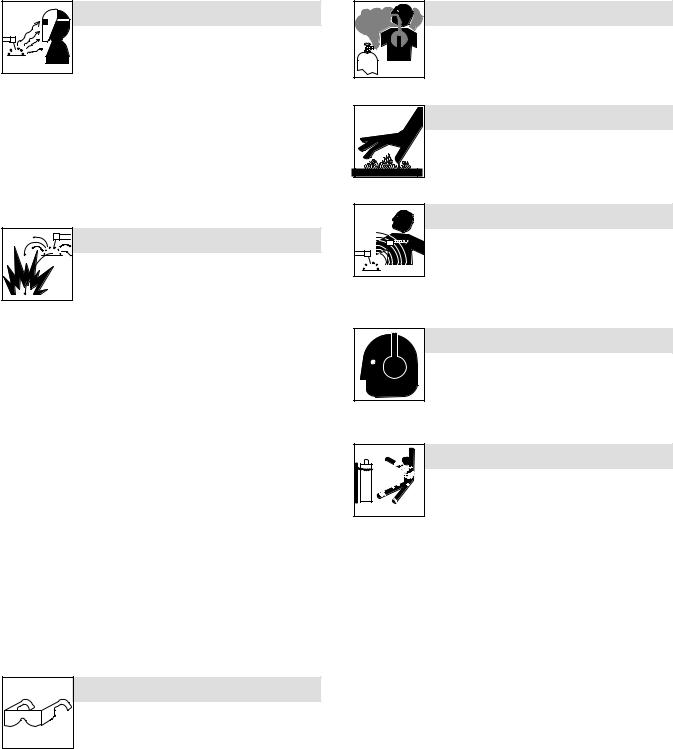
ARC RAYS can burn eyes and skin.
Arc rays from the welding process produce intense visible and invisible (ultraviolet and infrared) rays that can burn eyes and skin. Sparks fly off from the weld.
DWear a welding helmet fitted with a proper shade of filter to protect your face and eyes when welding or watching (see ANSI Z49.1 and Z87.1 listed in Safety Standards).
DWear approved safety glasses with side shields under your helmet.
DUse protective screens or barriers to protect others from flash and glare; warn others not to watch the arc.
DWear protective clothing made from durable, flame-resistant material (leather and wool) and foot protection.
WELDING can cause fire or explo-
sion.
Welding on closed containers, such as tanks, drums, or pipes, can cause them to blow up. Sparks can fly off from the welding arc. The flying sparks, hot workpiece, and hot equipment can cause fires and
burns. Accidental contact of electrode to metal objects can cause sparks, explosion, overheating, or fire. Check and be sure the area is safe before doing any welding.
DProtect yourself and others from flying sparks and hot metal.
DDo not weld where flying sparks can strike flammable material.
DRemove all flammables within 35 ft (10.7 m) of the welding arc. If this is not possible, tightly cover them with approved covers.
DBe alert that welding sparks and hot materials from welding can easily go through small cracks and openings to adjacent areas.
DWatch for fire, and keep a fire extinguisher nearby.
DBe aware that welding on a ceiling, floor, bulkhead, or partition can cause fire on the hidden side.
DDo not weld on closed containers such as tanks, drums, or pipes, unless they are properly prepared according to AWS F4.1 (see Safety Standards).
DConnect work cable to the work as close to the welding area as practical to prevent welding current from traveling long, possibly unknown paths and causing electric shock and fire hazards.
DDo not use welder to thaw frozen pipes.
DRemove stick electrode from holder or cut off welding wire at contact tip when not in use.
DWear oil-free protective garments such as leather gloves, heavy shirt, cuffless trousers, high shoes, and a cap.
DRemove any combustibles, such as a butane lighter or matches, from your person before doing any welding.
FLYING METAL can injure eyes.
DWelding, chipping, wire brushing, and grinding cause sparks and flying metal. As welds cool, they can throw off slag.
DWear approved safety glasses with side shields even under your welding helmet.
OM-196 188 Page 2
BUILDUP OF GAS can injure or kill.
D Shut off shielding gas supply when not in use.
D Always ventilate confined spaces or use approved air-supplied respirator.
HOT PARTS can cause severe burns.
DDo not touch hot parts bare handed.
DAllow cooling period before working on gun or
torch.
MAGNETIC FIELDS can affect pacemakers.
D Pacemaker wearers keep away.
D Wearers should consult their doctor before going near arc welding, gouging, or spot welding operations.
NOISE can damage hearing.
Noise from some processes or equipment can damage hearing.
DWear approved ear protection if noise level is high.
CYLINDERS can explode if damaged.
Shielding gas cylinders contain gas under high pressure. If damaged, a cylinder can explode. Since gas cylinders are normally part of the welding process, be sure to treat them carefully.
DProtect compressed gas cylinders from excessive heat, mechanical shocks, slag, open flames, sparks, and arcs.
DInstall cylinders in an upright position by securing to a stationary support or cylinder rack to prevent falling or tipping.
DKeep cylinders away from any welding or other electrical circuits.
DNever drape a welding torch over a gas cylinder.
DNever allow a welding electrode to touch any cylinder.
DNever weld on a pressurized cylinder – explosion will result.
DUse only correct shielding gas cylinders, regulators, hoses, and fittings designed for the specific application; maintain them and associated parts in good condition.
DTurn face away from valve outlet when opening cylinder valve.
DKeep protective cap in place over valve except when cylinder is in use or connected for use.
DRead and follow instructions on compressed gas cylinders, associated equipment, and CGA publication P-1 listed in Safety Standards.
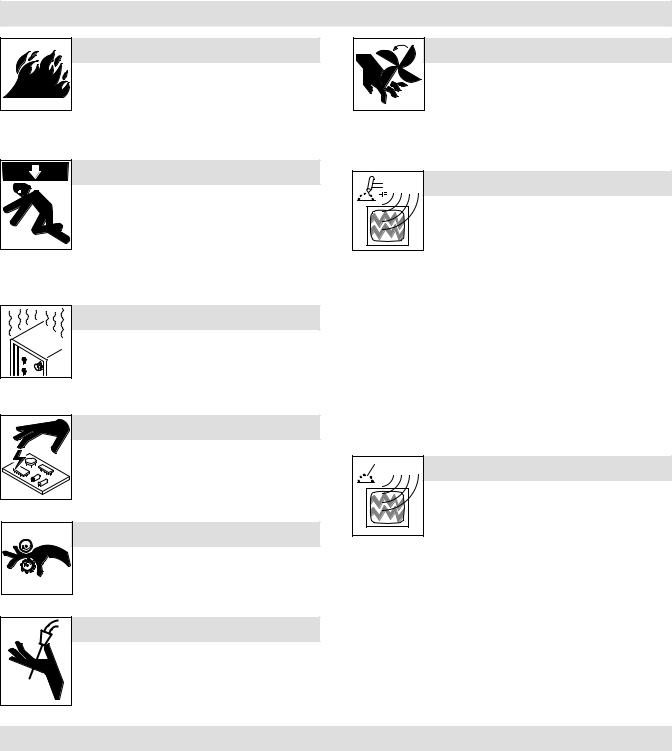
1-3. Additional Symbols For Installation, Operation, And Maintenance
FIRE OR EXPLOSION hazard.
D Do not install or place unit on, over, or near combustible surfaces.
D Do not install unit near flammables.
DDo not overload building wiring – be sure power supply system is properly sized, rated, and protected to handle this unit.
MOVING PARTS can cause injury.
DKeep away from moving parts such as fans.
DKeep all doors, panels, covers, and guards closed and securely in place.
FALLING UNIT can cause injury.
DUse lifting eye to lift unit only, NOT running gear, gas cylinders, or any other accessories.
DUse equipment of adequate capacity to lift and support unit.
DIf using lift forks to move unit, be sure forks are long enough to extend beyond opposite side of unit.
OVERUSE can cause OVERHEATING
DAllow cooling period; follow rated duty cycle.
DReduce current or reduce duty cycle before starting to weld again.
DDo not block or filter airflow to unit.
H.F. RADIATION can cause interference.
DHigh-frequency (H.F.) can interfere with radio navigation, safety services, computers, and communications equipment.
DHave only qualified persons familiar with electronic equipment perform this installation.
DThe user is responsible for having a qualified electrician promptly correct any interference problem resulting from the installation.
DIf notified by the FCC about interference, stop using the equipment at once.
DHave the installation regularly checked and maintained.
DKeep high-frequency source doors and panels tightly shut, keep spark gaps at correct setting, and use grounding and shielding to minimize the possibility of interference.
STATIC (ESD) can damage PC boards.
DPut on grounded wrist strap BEFORE handling boards or parts.
DUse proper static-proof bags and boxes to store, move, or ship PC boards.
MOVING PARTS can cause injury.
DKeep away from moving parts.
DKeep away from pinch points such as drive rolls.
WELDING WIRE can cause injury.
DDo not press gun trigger until instructed to do so.
DDo not point gun toward any part of the body, other people, or any metal when threading welding wire.
ARC WELDING can cause interference.
DElectromagnetic energy can interfere with sensitive electronic equipment such as computers and computer-driven equipment such as robots.
DBe sure all equipment in the welding area is electromagnetically compatible.
DTo reduce possible interference, keep weld cables as short as possible, close together, and down low, such as on the floor.
DLocate welding operation 100 meters from any sensitive electronic equipment.
DBe sure this welding machine is installed and grounded according to this manual.
DIf interference still occurs, the user must take extra measures such as moving the welding machine, using shielded cables, using line filters, or shielding the work area.
1-4. Principal Safety Standards
Safety in Welding and Cutting, ANSI Standard Z49.1, from American Welding Society, 550 N.W. LeJeune Rd, Miami FL 33126
Safety and Health Standards, OSHA 29 CFR 1910, from Superintendent of Documents, U.S. Government Printing Office, Washington, D.C.
20402.
Recommended Safe Practices for the Preparation for Welding and Cutting of Containers That Have Held Hazardous Substances, American
Welding Society Standard AWS F4.1, from American Welding Society,
550 N.W. LeJeune Rd, Miami, FL 33126
National Electrical Code, NFPA Standard 70, from National Fire Protection Association, Batterymarch Park, Quincy, MA 02269.
Safe Handling of Compressed Gases in Cylinders, CGA Pamphlet P-1, from Compressed Gas Association, 1235 Jefferson Davis Highway, Suite 501, Arlington, VA 22202.
Code for Safety in Welding and Cutting, CSA Standard W117.2, from
Canadian Standards Association, Standards Sales, 178 Rexdale Boulevard, Rexdale, Ontario, Canada M9W 1R3.
Safe Practices For Occupation And Educational Eye And Face
Protection, ANSI Standard Z87.1, from American National Standards
Institute, 1430 Broadway, New York, NY 10018.
Cutting And Welding Processes, NFPA Standard 51B, from National Fire Protection Association, Batterymarch Park, Quincy, MA 02269.
OM-196 188 Page 3

1-5. EMF Information
Considerations About Welding And The Effects Of Low Frequency Electric And Magnetic Fields
Welding current, as it flows through welding cables, will cause electromagnetic fields. There has been and still is some concern about such fields. However, after examining more than 500 studies spanning 17 years of research, a special blue ribbon committee of the National Research Council concluded that: “The body of evidence, in the committee’s judgment, has not demonstrated that exposure to powerfrequency electric and magnetic fields is a human-health hazard.”
However, studies are still going forth and evidence continues to be examined. Until the final conclusions of the research are reached, you may wish to minimize your exposure to electromagnetic fields when welding or cutting.
To reduce magnetic fields in the workplace, use the following procedures:
1.Keep cables close together by twisting or taping them.
2.Arrange cables to one side and away from the operator.
3.Do not coil or drape cables around your body.
4.Keep welding power source and cables as far away from operator as practical.
5.Connect work clamp to workpiece as close to the weld as possible.
About Pacemakers:
Pacemaker wearers consult your doctor first. If cleared by your doctor, then following the above procedures is recommended.
OM-196 188 Page 4
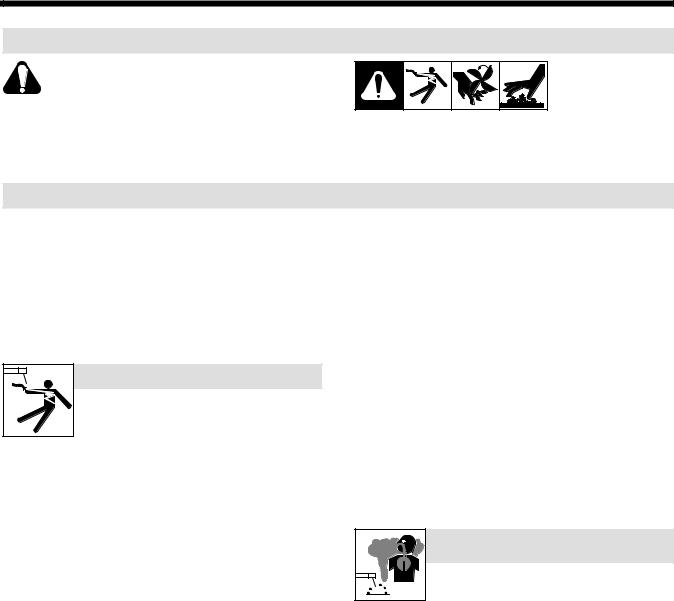
SECTION 1 – CONSIGNES DE SECURITE – LIRE AVANT
UTILISATION
som _nd_fre 4/98
1-1. Signification des symboles
Signifie Mise en garde ! Soyez vigilant ! Cette procédure présente des risques de danger ! Ceux-ci sont identifiés par des symboles adjacents aux directives.
Y Identifie un message de sécurité particulier.
. Signifie NOTA ; n’est pas relatif à la sécurité.
Ce groupe de symboles signifie Mise en garde ! Soyez vigilant ! Il y a des risques de danger reliés aux CHOCS ÉLECTRIQUES, aux PIÈCES EN MOUVEMENT et aux PIÈCES CHAUDES. Reportez-vous aux symboles et aux directives ci-dessous afin de connaître les mesures à prendre pour éviter tout danger.
1-2. Dangers relatifs au soudage à l’arc
YLes symboles présentés ci-après sont utilisés tout au long du présent manuel pour attirer votre attention et identifier les risques de danger. Lorsque vous voyez un symbole, soyez vigilant et suivez les directives mentionnées afin d’éviter tout danger. Les consignes de sécurité présentées ci-après ne font que résumer l’information contenue dans les normes de sécurité énumérées à la section 1-4. Veuillez lire et respecter toutes ces normes de sécurité.
YL’installation, l’utilisation, l’entretien et les réparations ne doivent être confiés qu’à des personnes qualifiées.
YAu cours de l’utilisation, tenir toute personne à l’écart et plus particulièrement les enfants.
DN’utiliser qu’un matériel en bon état. Réparer ou remplacer sur-le- champ les pièces endommagées. Entretenir l’appareil conformément à ce manuel.
DPorter un harnais de sécurité quand on travaille en hauteur.
DMaintenir solidement en place tous les panneaux et capots.
DFixer le câble de retour de façon à obtenir un bon contact métal-métal avec la pièce à souder ou la table de travail, le plus près possible de la soudure.
DIsoler la pince de masse quand pas mis à la pièce pour éviter le contact avec tout objet métallique.
UN CHOC ÉLECTRIQUE peut tuer.
Un simple contact avec des pièces électriques peut provoquer une électrocution ou des blessures graves. L’électrode et le circuit de soudage sont sous tension dès que l’appareil est sur ON. Le circuit d’entrée et les circuits internes de l’appareil sont également sous
tension à ce moment-là. En soudage semi-automatique ou automatique, le fil, le dévidoir, le logement des galets d’entraînement et les pièces métalliques en contact avec le fil de soudage sont sous tension. Des matériels mal installés ou mal mis à la terre présentent un danger.
DNe jamais toucher les pièces électriques sous tension.
DPorter des gants et des vêtements de protection secs ne comportant pas de trous.
DS’isoler de la pièce et de la terre au moyen de tapis ou d’autres moyens isolants suffisamment grands pour empêcher le contact physique éventuel avec la pièce ou la terre.
DNe pas se servir de source électrique àcourant électrique dans les zones humides, dans les endroits confinés ou là où on risque de tomber.
DSe servir d’une source électrique àcourant électrique UNIQUEMENT si le procédé de soudage le demande.
DSi l’utilisation d’une source électrique àcourant électrique s’avère nécessaire, se servir de la fonction de télécommande si l’appareil en est équipé.
DCouper l’alimentation ou arrêter le moteur avant de procéder à l’installation, à la réparation ou à l’entretien de l’appareil. Déverrouiller l’alimentation selon la norme OSHA 29 CFR 1910.147 (voir normes de sécurité).
DInstaller et mettre à la terre correctement cet appareil conformément à son manuel d’utilisation et aux codes nationaux, provinciaux et municipaux.
DToujours vérifier la terre du cordon d’alimentation – Vérifier et s’assurer que le fil de terre du cordon d’alimentation est bien raccordé à la borne de terre du sectionneur ou que la fiche du cordon est raccordée à une prise correctement mise à la terre.
DEn effectuant les raccordements d’entrée fixer d’abord le conducteur de mise à la terre approprié et contre-vérifier les connexions.
DVérifier fréquemment le cordon d’alimentation pour voir s’il n’est pas endommagé ou dénudé – remplacer le cordon immédiatement s’il est endommagé – un câble dénudé peut provoquer une électrocution.
DMettre l’appareil hors tension quand on ne l’utilise pas.
DNe pas utiliser des câbles usés, endommagés, de grosseur insuffisante ou mal épissés.
DNe pas enrouler les câbles autour du corps.
DSi la pièce soudée doit être mise à la terre, le faire directement avec un câble distinct.
DNe pas toucher l’électrode quand on est en contact avec la pièce, la terre ou une électrode provenant d’une autre machine.
Il y a DU COURANT CONTINU IMPORTANT dans les convertisseurs après la suppression de l’alimentation électrique.
DArrêter les convertisseurs, débrancher le courant électrique, et décharger les condensateurs d’alimentation selon les instructions indiquées dans la partie entretien avant de toucher les pièces.
LES FUMÉES ET LES GAZ peuvent être dangereux.
Le soudage génère des fumées et des gaz. Leur inhalation peut être dangereux pour votre santé.
DEloigner votre tête des fumées. Ne pas respirer les fumées.
DA l’intérieur, ventiler la zone et/ou utiliser un échappement au niveau de l’arc pour l’évacuation des fumées et des gaz de soudage.
DSi la ventilation est insuffisante, utiliser un respirateur à alimentation d’air homologué.
DLire les spécifications de sécurité des matériaux (MSDSs) et les instructions du fabricant concernant les métaux, les consommables, les revêtements, les nettoyants et les dégraisseurs.
DTravailler dans un espace fermé seulement s’il est bien ventilé ou en portant un respirateur à alimentation d’air. Demander toujours à un surveillant dûment formé de se tenir à proximité. Des fumées et des gaz de soudage peuvent déplacer l’air et abaisser le niveau d’oxygène provoquant des blessures ou des accidents mortels. S’assurer que l’air de respiration ne présente aucun danger.
DNe pas souder dans des endroits situés à proximité d’opérations de dégraissage, de nettoyage ou de pulvérisation. La chaleur et les rayons de l’arc peuvent réagir en présence de vapeurs et former des gaz hautement toxiques et irritants.
DNe pas souder des métaux munis d’un revêtement, tels que l’acier galvanisé, plaqué en plomb ou au cadmium à moins que le revêtement n’ait été enlevé dans la zone de soudure, que l’endroit soit bien ventilé, et si nécessaire, en portant un respirateur à alimentation d’air. Les revêtements et tous les métaux renfermant ces éléments peuvent dégager des fumées toxiques en cas de soudage.
OM-196 188 Page 5
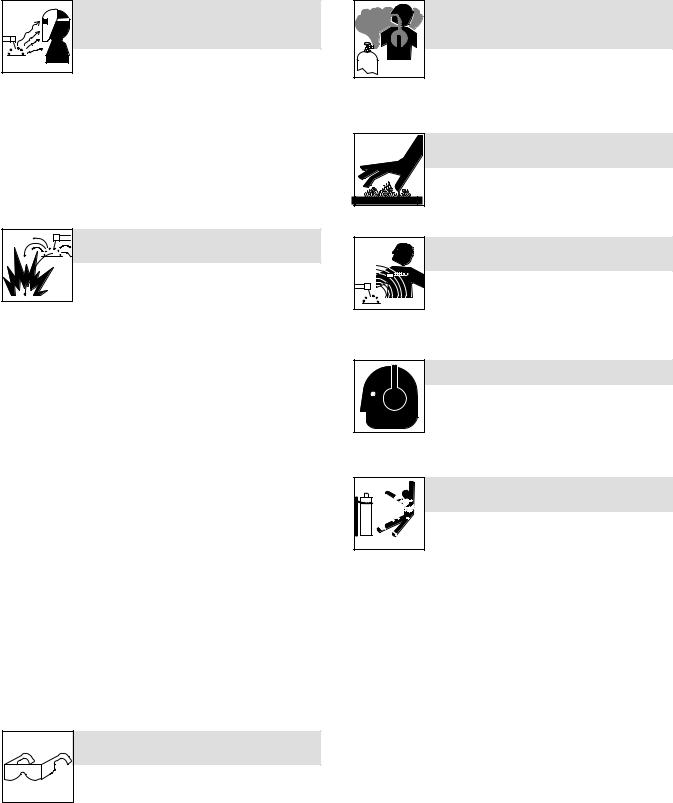
LES RAYONS DE L’ARC peuvent provoquer des brûlures dans les yeux et sur la peau.
Le rayonnement de l’arc du procédé de soudage génère des rayons visibles et invisibles intenses (ultraviolets et infrarouges) susceptibles de provoquer
des brûlures dans les yeux et sur la peau. Des étincelles sont projetées pendant le soudage.
DPorter un casque de soudage muni d’un écran de filtre approprié pour protéger votre visage et vos yeux pendant le soudage ou pour regarder (voir ANSI Z49.1 et Z87.1 énuméré dans les normes de sécurité).
DPorter des protections approuvés pour les oreilles si le niveau sondre est trop élevé.
DUtiliser des écrans ou des barrières pour protéger des tiers de l’éclair et de l’éblouissement; demander aux autres personnes de ne pas regarder l’arc.
DPorter des vêtements de protection constitué dans une matière durable, résistant au feu (cuir ou laine) et une protection des pieds.
LE SOUDAGE peut provoquer un incendie ou une explosion.
Le soudage effectué sur des conteneurs fermés tels que des réservoirs, tambours ou des conduites peut provoquer leur éclatement. Des étincelles peuvent être projetées de l’arc de soudure. La projection d’étincel-
les, des pièces chaudes et des équipements chauds peut provoquer des incendies et des brûlures. Le contact accidentel de l’électrode avec des objets métalliques peut provoquer des étincelles, une explosion, un surchauffement ou un incendie. Avant de commencer le soudage, vérifier et s’assurer que l’endroit ne présente pas de danger.
DSe protéger et d’autres personnes de la projection d’étincelles et de métal chaud.
DNe pas souder dans un endroit là où des étincelles peuvent tomber sur des substances inflammables.
DDéplacer toutes les substances inflammables à une distance de 10,7 m de l’arc de soudage. En cas d’impossibilité les recouvrir soigneusement avec des protections homologués.
DDes étincelles et des matériaux chauds du soudage peuvent facilement passer dans d’autres zones en traversant de petites fissures et des ouvertures.
DSurveiller tout déclenchement d’incendie et tenir un extincteur à proximité.
DLe soudage effectué sur un plafond, plancher, paroi ou séparation peut déclencher un incendie de l’autre côté.
DNe pas effectuer le soudage sur des conteneurs fermés tels que des réservoirs, tambours, ou conduites, à moins qu’ils n’aient été préparés correctement conformément à AWS F4.1 (voir les normes de sécurité).
DBrancher le câble sur la pièce le plus près possible de la zone de soudage pour éviter le transport du courant sur une longue distance par des chemins inconnus éventuels en provoquant des risques d’électrocution et d’incendie.
DNe pas utiliser le poste de soudage pour dégeler des conduites gelées.
DEn cas de non utilisation, enlever la baguette d’électrode du porteélectrode ou couper le fil à la pointe de contact.
DPorter des vêtements de protection dépourvus d’huile tels que des gants en cuir, une chemise en matériau lourd, des pantalons sans revers, des chaussures hautes et un couvre chef.
DAvant de souder, retirer toute substance combustible de vos poches telles qu’un allumeur au butane ou des allumettes.
DES PARTICULES VOLANTES peuvent blesser les yeux.
DLe soudage, l’écaillement, le passage de la pièce à la brosse en fil de fer, et le meulage génèrent des étincelles et des particules métalliques vo-
lantes. Pendant la période de refroidissement des soudures, elles risquent de projeter du laitier.
D Porter des lunettes de sécurité avec écrans latéraux ou un écran facial.
LES ACCUMULATIONS DE GAZ risquent de provoquer des blessures ou même la mort.
DFermer l’alimentation du gaz protecteur en cas de non utilisation.
DVeiller toujours à bien aérer les espaces confinés ou se servir d’un respirateur d’adduction d’air homologué.
DES PIÈCES CHAUDES peuvent provoquer des brûlures graves.
D Ne pas toucher des parties chaudes à mains nues
D Prévoir une période de refroidissement avant d’utiliser le pistolet ou la torche.
LES CHAMPS MAGNÉTIQUES peuvent affecter les stimulateurs cardiaques.
D Porteurs de stimulateur cardiaque, restez à distance.
D Les porteurs d’un stimulateur cardiaque doivent d’abord consulter leur médecin avant de s’approcher des opérations de soudage à l’arc, de gougeage ou de soudage par points.
LE BRUIT peut affecter l’ouïe.
Le bruit des processus et des équipements peut affecter l’ouïe.
DPorter des protections approuvés pour les oreilles si le niveau sondre est trop élevé.
Si des BOUTEILLES sont endommagées, elles pourront exploser.
Des bouteilles de gaz protecteur contiennent du gaz sous haute pression. Si une bouteille est endommagée, elle peut exploser. Du fait que les bouteilles de gaz font normalement partie du procédé de soudage, les
manipuler avec précaution.
DProtéger les bouteilles de gaz comprimé d’une chaleur excessive, des chocs mécaniques, du laitier, des flammes ouvertes, des étincelles et des arcs.
DPlacer les bouteilles debout en les fixant dans un support stationnaire ou dans un porte-bouteilles pour les empêcher de tomber ou de se renverser.
DTenir les bouteilles éloignées des circuits de soudage ou autres circuits électriques.
DNe jamais placer une torche de soudage sur une bouteille à gaz.
DUne électrode de soudage ne doit jamais entrer en contact avec une bouteille.
DNe jamais souder une bouteille pressurisée – risque d’explosion.
DUtiliser seulement des bouteilles de gaz protecteur, régulateurs, tuyaux et raccords convenables pour cette application spécifique; les maintenir ainsi que les éléments associés en bon état.
DNe pas tenir la tête en face de la sortie en ouvrant la soupape de la bouteille.
DMaintenir le chapeau de protection sur la soupape, sauf en cas d’utilisation ou de branchement de la bouteille.
DLire et suivre les instructions concernant les bouteilles de gaz comprimé, les équipements associés et les publications P-1 CGA énumérées dans les normes de sécurité.
OM-196 188 Page 6
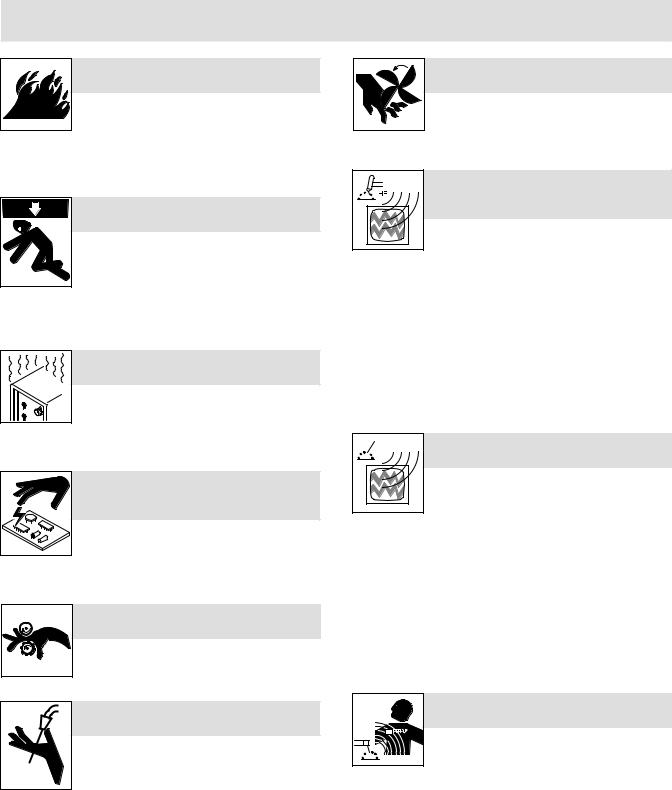
1-3. Dangers supplémentaires en relation avec l’installation, le fonctionnement et la maintenance
Risque D’INCENDIE OU
D’EXPLOSION.
DNe pas placer l’appareil sur, au-dessus ou à proximité de surfaces infllammables.
DNe pas installer l’appareil à proximité de produits inflammables
DNe pas surcharger l’installation électrique – s”assurer que l’alimentation est correctement dimensionné et protégé avant de mettre l’appareil en service.
LA CHUTE DE L’APPAREIL peut blesser.
DUtiliser l’anneau de levage uniquement pour soulever l’appareil, NON PAS les chariot, les bouteilles de gaz ou tout autre accessoire.
DUtiliser un engin d’une capacité appropriée pour soulever l’appareil.
DEn utilisant des fourches de levage pour déplacer l’unité, s’assurer que les fourches sont suffisamment longues pour dépasser du côté opposé de l’appareil.
L’EMPLOI EXCESSIF peut
SURCHAUFFER L’ÉQUIPEMENT.
DPrévoir une période de refroidissement, respecter le cycle opératoire nominal.
DRéduire le courant ou le cycle opératoire avant de recommancer le soudage.
DNe pas obstruer les passages d’air du poste.
LES CHARGES ÉLECTROSTATIQUES peuvent endommager les circuits imprimés.
D Établir la connexion avec la barrette de terre avant de manipuler des cartes ou des pièces.
DUtiliser des pochettes et des boîtes antistatiques pour stocker, déplacer ou expédier des cartes de circuits imprimes.
DES ORGANES MOBILES peuvent provoquer des blessures.
D Ne pas s’approcher des organes mobiles.
DNe pas s’approcher des points de coincement tels que des rouleaux de commande.
LES FILS DE SOUDAGE peuvent provoquer des blessures.
DNe pas appuyer sur la gachette avant d’en avoir reçu l’instruction.
DNe pas diriger le pistolet vers soi, d’autres personnes ou toute pièce mécanique en engageant le fil de soudage.
DES ORGANES MOBILES peuvent provoquer des blessures.
D Rester à l’écart des organes mobiles comme le ventilateur.
DMaintenir fermés et fixement en place les portes, panneaux, recouvrements et dispositifs de protection.
LE RAYONNEMENT HAUTE FRÉQUENCE (H.F.) risque de provoquer des interférences.
D Le rayonnement haute frequence peut provoquer des interférences avec les équipements de ra- dio–navigation et de communication, les services de sécurité et les ordinateurs.
DDemander seulement à des personnes qualifiées familiarisées avec des équipements électroniques de faire fonctionner l’installation.
DL’utilisateur est tenu de faire corriger rapidement par un électricien qualifié les interférences résultant de l’installation.
DSi le FCC signale des interférences, arrêter immédiatement l’appareil.
DEffectuer régulièrement le contrôle et l’entretien de l’installation.
DMaintenir soigneusement fermés les portes et les panneaux des sources de haute fréquence, maintenir les éclateurs à une distance correcte et utiliser une terre et et un blindage pour réduire les interférences éventuelles.
LE SOUDAGE À L’ARC risque de provoquer des interférences.
D L’énergie électromagnétique risque de provoquer des interférences pour l’équipement électronique sensible tel que les ordinateurs et l’équipement commandé par ordinateur tel que les robots.
DVeiller à ce que tout l’équipement de la zone de soudage soit compatible électromagnétiquement.
DPour réduire la possibilité d’interférence, maintenir les câbles de soudage aussi courts que possible, les grouper, et les poser aussi bas que possible (ex. par terre).
DVeiller à souder à une distance de 100 mètres de tout équipement électronique sensible.
DVeiller à ce que ce poste de soudage soit posé et mis à la terre conformément à ce mode d’emploi.
DEn cas d’interférences après avoir pris les mesures précédentes, il incombe à l’utilisateur de prendre des mesures supplémentaires telles que le déplacement du poste, l’utilisation de câbles blindés, l’utilisation de filtres de ligne ou la pose de protecteurs dans la zone de travail.
LES CHAMPS MAGNÉTIQUES peuvent affecter les stimulateurs cardiaques.
D Porteurs de stimulateur cardiaque, restez à distance.
DLes porteurs d’un stimulateur cardiaque doivent d’abord consulter leur médecin avant de s’approcher des opérations de soudage à l’arc, de gougeage ou de soudage par points.
OM-196 188 Page 7

1-4. Principales normes de sécurité
Safety in Welding and Cutting, norme ANSI Z49.1, de l’American Welding Society, 550 N.W. Lejeune Rd, Miami FL 33126
Safety and Health Sandards, OSHA 29 CFR 1910, du Superintendent of Documents, U.S. Government Printing Office, Washington, D.C.
20402.
Recommended Safe Practice for the Preparation for Welding and Cutting of Containers That Have Held Hazardous Substances, norme AWS F4.1, de l’American Welding Society, 550 N.W. Lejeune Rd, Miami FL 33126
National Electrical Code, NFPA Standard 70, de la National Fire Protection Association, Batterymarch Park, Quincy, MA 02269.
Safe Handling of Compressed Gases in Cylinders, CGA Pamphlet P-1, de la Compressed Gas Association, 1235 Jefferson Davis Highway, Suite 501, Arlington, VA 22202.
Règles de sécurité en soudage, coupage et procédés connexes, norme
CSA W117.2, de l’Association canadienne de normalisation, vente de normes, 178 Rexdale Boulevard, Rexdale (Ontario) Canada M9W 1R3.
Safe Practices For Occupation And Educational Eye And Face Protection, norme ANSI Z87.1, de l’American National Standards Institute, 1430 Broadway, New York, NY 10018.
Cutting and Welding Processes, norme NFPA 51B, de la National Fire Protection Association, Batterymarch Park, Quincy, MA 02269.
1-5. Information sur les champs électromagnétiques
Données sur le soudage électrique et sur les effets, pour l’organisme, des champs magnétiques basse fréquence
Le courant de soudage, pendant son passage dans les câbles de soudage, causera des champs électromagnétiques. Il y a eu et il y a encore un certain souci à propos de tels champs. Cependant, après avoir examiné plus de 500 études qui ont été faites pendant une période de recherche de 17 ans, un comité spécial ruban bleu du National Research Council a conclu: “L’accumulation de preuves, suivant le jugement du comité, n’a pas démontré que l’exposition aux champs magnétiques et champs électriques à haute fréquence représente un risque à la santé humaine”. Toutefois, des études sont toujours en cours et les preuves continuent à être examinées. En attendant que les conclusions finales de la recherche soient établies, il vous serait souhaitable de réduire votre exposition aux champs électromagnétiques pendant le soudage ou le coupage.
Afin de réduire les champs électromagnétiques dans l’environnement de travail, respecter les consignes suivantes :
1Garder les câbles ensembles en les torsadant ou en les attachant avec du ruban adhésif.
2Mettre tous les câbles du côté opposé de l’opérateur.
3Ne pas courber pas et ne pas entourer pas les câbles autour de votre corps.
4Garder le poste de soudage et les câbles le plus loin possible de vous.
5Relier la pince de masse le plus près possible de la zone de soudure.
Consignes relatives aux stimulateurs cardiaques :
Les personnes qui portent un stimulateur cardiaque doivent avant tout consulter leur docteur. Si vous êtes déclaré apte par votre docteur, il est alors recommandé de respecter les consignes ci–dessus.
OM-196 188 Page 8
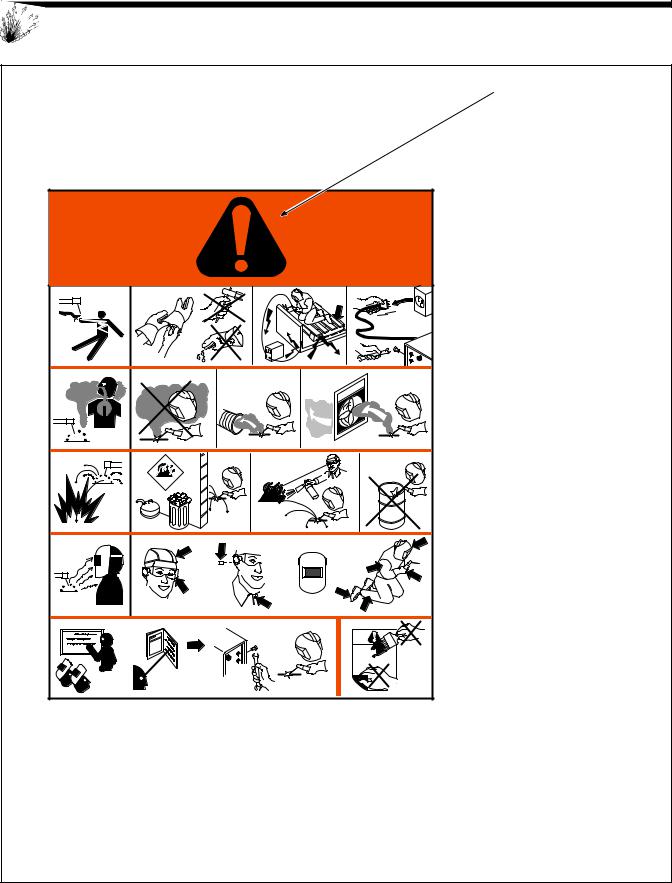
SECTION 2 – DEFINITIONS
2-1. |
Manufacturer’s Warning Label Definitions |
|
|
||||
|
|
|
|
|
|
Warning! Watch Out! There are |
|
|
|
|
|
|
|
possible hazards as shown by the |
|
|
|
|
|
|
|
symbols. |
|
|
|
|
|
|
|
1 |
Electric shock from welding |
|
|
|
|
|
|
|
electrode or wiring can kill. |
|
|
|
|
|
|
1.1 |
Wear dry insulating gloves. |
|
|
|
|
|
|
|
Do not touch electrode with |
|
|
|
|
|
|
|
bare hand. Do not wear wet or |
|
|
|
|
|
|
|
damaged gloves. |
|
|
|
|
|
|
1.2 |
Protect yourself from electric |
|
|
|
|
|
|
|
shock by insulating yourself |
|
|
|
|
|
|
|
from work and ground. |
|
|
|
|
|
|
1.3 |
Disconnect input plug or |
|
|
|
|
|
|
|
power before working on |
|
|
|
|
|
|
|
machine. |
|
|
|
|
|
|
2 |
Breathing welding fumes can |
|
1 |
1.1 |
|
1.2 |
1.3 |
|
be hazardous to your health. |
|
|
|
|
|
|
2.1 |
Keep your head out of the |
|
|
|
|
|
|
|
fumes. |
|
|
|
|
|
|
2.2 |
Use forced ventilation or local |
|
|
|
|
|
|
|
exhaust to remove the fumes. |
|
|
|
|
|
|
2.3 |
Use ventilating fan to remove |
|
2 |
2.1 |
2.2 |
|
2.3 |
|
fumes. |
|
|
|
|
|
|
3 |
Welding sparks can cause |
|
|
|
|
|
|
|
explosion or fire. |
|
|
|
|
|
|
3.1 |
Keep flammables away from |
|
|
|
|
|
|
|
welding. Do not weld near |
|
|
|
|
|
|
|
flammables. |
|
3 |
3.1 |
|
3.2 |
3.3 |
3.2 |
Welding sparks can cause |
|
|
|
fires. Have a fire extinguisher |
||||
|
|
|
|
|
|
|
|
|
|
|
|
|
|
|
nearby, and have a |
|
|
|
|
|
|
|
watchperson ready to use it. |
|
|
|
|
|
|
3.3 |
Do not weld on drums or any |
|
|
|
|
|
|
|
closed containers. |
|
4 |
4.1 |
|
|
|
4 |
Arc rays can burn eyes and |
|
|
|
|
|
injure skin. |
||
|
|
|
+ |
+ |
+ |
|
|
|
|
|
4.1 |
Wear hat and safety glasses. |
|||
|
|
|
|
|
|
|
Use ear protection and button |
|
|
|
|
|
|
|
shirt collar. Use welding |
|
|
|
|
|
|
|
helmet with correct shade of |
|
|
|
|
|
|
|
filter. Wear complete body |
|
5 |
+ |
|
|
6 |
|
protection. |
|
|
|
5 |
Become trained and read the |
|||
|
|
|
|
|
|||
|
|
|
|
|
|
||
|
|
|
|
|
|
|
instructions before working on |
|
|
|
|
|
|
|
the machine or welding. |
|
|
|
|
|
|
6 |
Do not remove or paint over |
|
|
|
|
|
|
S-179 310 |
(cover) the label. |
|
|
|
|
|
|
|
|
1/96
OM-196 188 Page 9
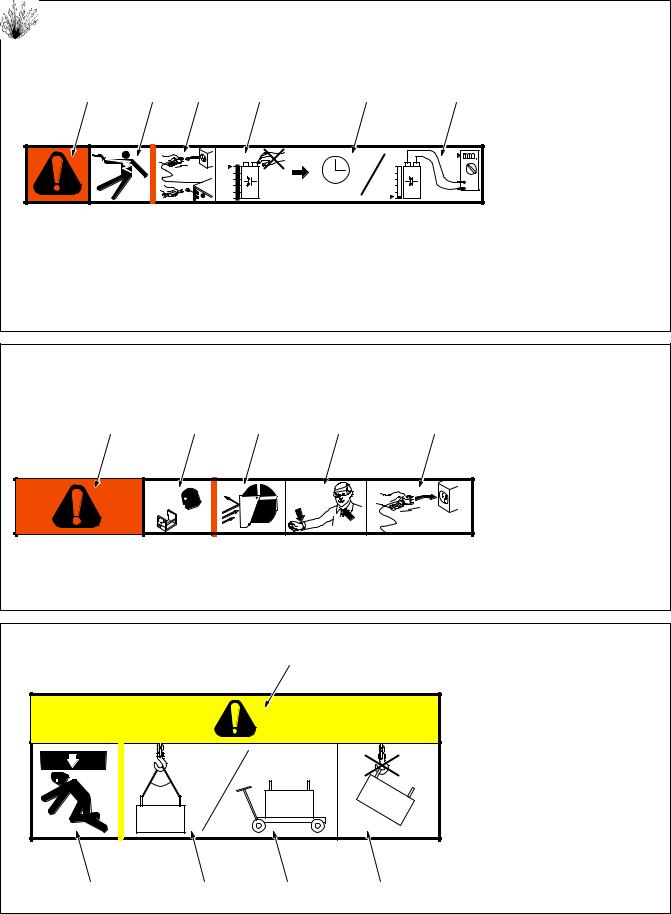
1 |
2 |
3 |
4 |
5 |
6 |
|
|
|
V |
|
V |
|
|
|
|
|
|
|
|
|
> 60 s |
V |
S-179 190-A |
1Warning! Watch Out! There are possible hazards as shown by the symbols.
2Electric shock from wiring can kill.
3Disconnect input plug or power before working on machine.
4Hazardous voltage remains on input capacitors after power is turned off. Do not touch fully charged capacitors.
5Always wait 60 seconds after power is turned off before working on unit, OR
6Check input capacitor voltage, and be sure it is near 0 before touching any parts.
4/96
1 Warning! Watch Out! There are possible hazards as shown by the symbols.
2 When power is applied failed parts can explode or cause other parts to explode.
1 |
2 |
3 |
4 |
5 |
3 Flying pieces of parts can cause injury. Always wear a face shield when servicing unit.
|
|
|
|
4 Always wear long sleeves and |
|
|
|
|
|
|
button your collar when |
|
|
|
|
|
servicing unit. |
|
|
|
S-179 304-A |
5 |
After taking proper |
|
|
|
|
|
precautions as shown, |
|
|
|
|
|
connect power to unit. |
|
|
|
|
|
4/96 |
|
|
|
|
1 Warning! Watch Out! There |
|
|
|
1 |
|
|
are possible hazards as |
|
|
|
|
shown by the symbols. |
|
|
|
|
|
2 Falling equipment can cause |
|
|
|
|
|
|
injury and damage to unit. |
|
|
|
|
3 Always lift and support unit |
|
|
|
|
|
|
using both handles. Keep |
|
|
|
|
|
angle of lifting device less |
|
= <60 ° |
|
|
|
than 60 degrees. |
|
|
|
4 Use a proper cart to move |
||
|
|
|
|
|
unit. |
|
|
|
5 Do not use one handle to lift |
||
|
|
|
|
||
|
|
|
|
|
or support unit. |
|
|
|
S-179 309-A |
|
|
2 |
3 |
4 |
5 |
|
|
|
|
|
|
|
1/96 |
OM-196 188 Page 10 |
|
|
|
|
|

2-2. Symbols And Definitions
A |
Amperage |
|
|
|
|
Positive |
|
|
|
|
|
|
|
|
|
|
Remote |
V |
Voltage |
|
|
|
|
|
|
|
|
|
|
|
|
|
|
|
|||||||
|
|
|
|
|
|
|
|
|
|
|
|
|
|
|
|
|
||||
|
|
|
|
|
|
|
|
|
|
|
|
|
|
|
|
|
|
|
|
|
|
|
|
|
|
|
|
|
|
|
|
|
|
|
|
|
|
|
|
|
|
|
Output |
|
|
|
|
Circuit Breaker |
|
|
|
|
|
|
|
|
|
|
Negative |
|
|
On |
|
|
|
|
|
|
|
|
|
|
|
|
|
|
|
|
|
||||
|
|
|
|
|
|
|
|
|
|
|
|
|
|
|
|
|
||||
|
|
|
|
|
|
|
|
|
|
|
|
|
|
|
|
|
||||
|
|
|
|
|
|
|
|
|
|
|
|
|
|
|
|
|
|
|
|
|
|
|
|
|
|
|
|
|
|
|
|
|
|
|
|
|
|
|
|
|
|
|
Off |
|
|
|
|
Inductance |
|
|
|
|
|
|
|
|
|
|
Protective Earth |
|
|
Voltage Input |
|
|
|
|
|
|
|
|
|
|
|
|
|
|
|
|
|
||||
|
|
|
|
|
|
|
|
|
|
|
|
|
|
(Ground) |
|
|
||||
|
|
|
|
|
|
|
|
|
|
|
|
|
|
|
|
|
|
|
|
|
|
|
|
|
|
|
|
|
|
|
|
|
|
|
|
|
|
|
|
|
|
|
|
|
|
|
|
|
|
|
|
|
|
|
|
|
|
|
|
|
|
|
2-3. Manufacturer’s Rating Label
S-184 765
2-4. Harmonic Data
HARMONIC DATA per IEC 61000-3-12, draft 2000-9-29
PRIMARY; 400V/30.5A/60hz
LOAD; |
450A/38Vdc/390IPM/,MAXIMUM OUTPUT, GMAW. |
||
R sce = 227.28 |
|||
|
|
|
|
THD |
61 Amps |
|
|
PWHD |
35 Amps |
|
|
Table 4, balanced three phase equipment.
OM-196 188 Page 11
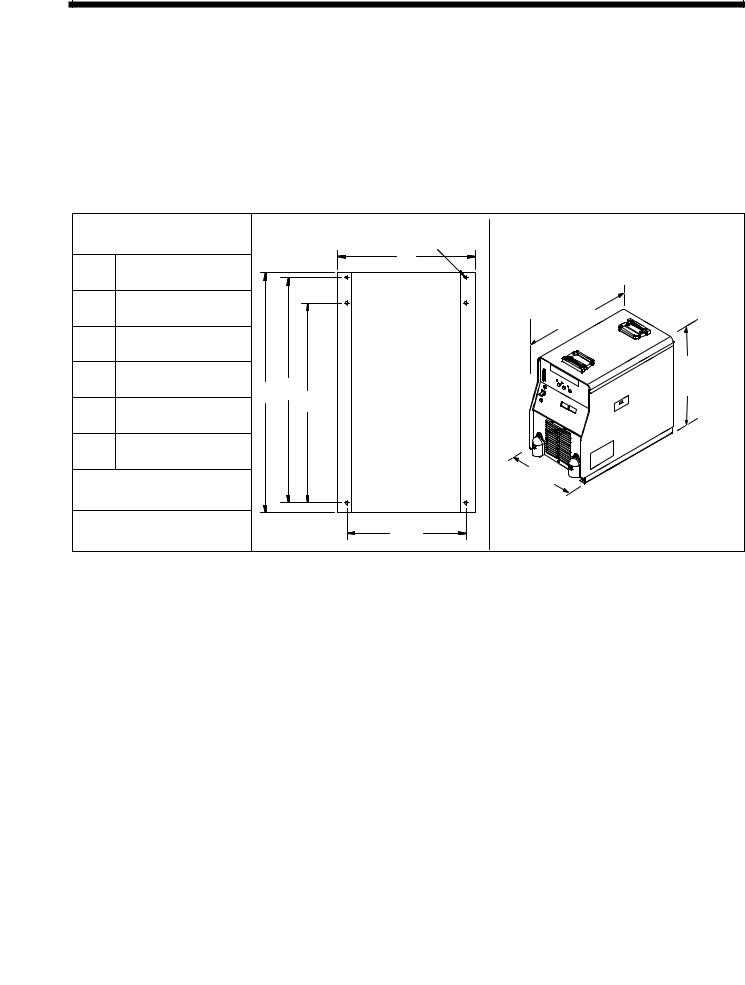
SECTION 3 – INSTALLATION
3-1. |
Specifications |
|
|
|
|
|
|
|
|
Input |
Rated Welding |
Voltage |
Wire Feed Speed |
Wire |
Maximum |
Amperes Input |
|
|
|
Open- |
At Rated Load |
KVA |
KW |
||||||
Diameter |
|||||||||
Power |
Output |
Range |
Range* |
Circuit |
Output 60 Hz, |
||||
Range |
|
|
|||||||
|
|
|
|
Voltage DC |
Three-Phase |
|
|
||
|
|
|
|
|
|
|
|||
|
|
|
|
|
|
|
|
|
|
Three |
450 A @ 38 Volts DC, |
|
Standard: |
.030 To .062 in |
|
|
|
|
|
100% Duty Cycle; |
10 – 38 |
95 |
31 |
21.6 |
19.4 |
||||
50 To 780 ipm |
|||||||||
Phase |
565 A @ 43 Volts DC, |
(0.8 To 1.6 mm) |
|||||||
|
(1.3 To 19.8 mpm) |
|
|
|
|
||||
|
60% Duty Cycle |
|
|
|
|
|
|
||
|
|
|
|
|
|
|
|
||
*Wire feed speed ranges are for GMAW welding. While pulse welding, wire feed speed ranges may be more limited (see Section 9) |
|
||||||||
**While idling |
|
|
|
|
|
|
|
||
|
|
|
|
|
|
|
|
|
|
3-2. Dimensions And Weight
|
Hole Layout Dimensions |
|
F |
|
|
|
|
|
|
A |
|
A |
14-21/64 in (363.9 mm) |
|
|
B |
20-3/4 in (527.1 mm) |
|
26 in |
|
|
|
(660 mm) |
C |
23-27/64 in (594.9 mm) |
|
|
D |
24-31/32 in (634.2 mm) |
|
23-3/4 in |
C |
(603 mm) |
||
|
D |
|
|
E |
12-3/8 in (314.3 mm) |
B |
|
|
|
||
F |
9/32 in (7.1 mm) Dia. |
|
|
|
|
|
14-1/2 in |
|
Weight |
|
(368 mm) |
|
|
|
|
|
130 lb (59 kg) |
E |
801 914-A |
|
|
|
OM-196 188 Page 12
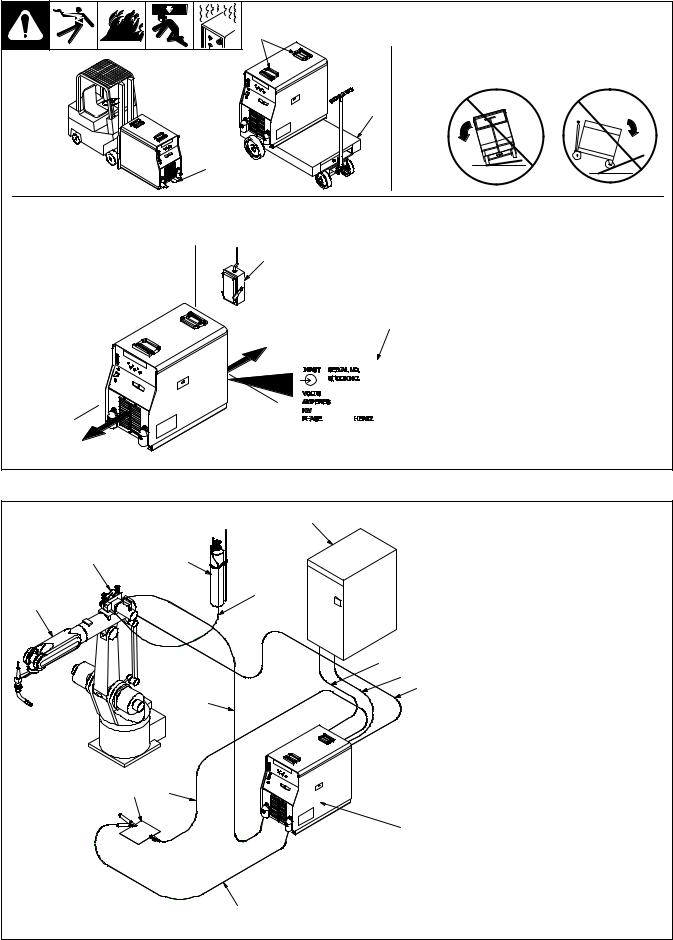
3-3. Selecting A Location
2
Movement |
Tipping |
3
OR
1
Location
YSpecial installation may be required where gasoline or volatile liquids are present – see NEC Article 511 or CEC Section 20.
5
18 in |
4 |
||||||||||
|
|
|
|
|
|||||||
(460 mm) |
|
|
|
|
|
||||||
|
|
|
|
|
|
|
|
|
|
|
|
|
|
|
|
|
|
|
|
|
|
|
|
|
|
|
|
|
|
|
|
|
|
|
|
|
|
|
|
|
|
|
|
|
|
|
|
|
|
|
|
|
|
|
|
|
|
|
|
|
|
|
|
|
|
|
|
|
|
|
|
|
|
|
|
|
|
|
|
|
|
|
|
|
|
|
|
|
|
|
|
|
|
|
|
|
|
|
|
|
|
|
|
|
|
|
|
|
|
|
|
|
|
|
|
|
|
|
|
|
|
|
|
|
|
|
|
|
|
|
|
18 in
(460 mm)
YDo not move or operate unit where it could tip.
1 Lifting Forks
Use lifting forks to move unit.
Extend forks beyond opposite side of unit.
2Lifting Handles Use handles to lift unit.
3Hand Cart
Use cart or similar device to move unit.
4 Rating Label
Use rating label to determine input power needs.
5 Line Disconnect Device
Locate unit near correct input power supply.
loc_2 3/96 - 801 958 / 801 914-A
3-4. Connection Diagram
5
2 |
3 |
4
1
6
7
8
13
11 12
9
.The proper interface kit must be installed in the interface unit to allow it to be connected to the robot.
1Robot (Will Vary According To Application)
2Motor/Drive Assembly
3Gas Cylinder
4Gas Hose
5Robot Control
6Robot Input/Output Cable
7Remote Program Select Cable (Optional)
8Gas And Motor Control Cable
9Welding Power
Source/Interface Unit
10Negative (–) Weld Cable
11Workpiece
12Voltage Sensing Lead
.Positive (+) voltage sensing lead is contained in the motor cable.
13 Positive (+) Weld Cable
10
801 915-B
OM-196 188 Page 13
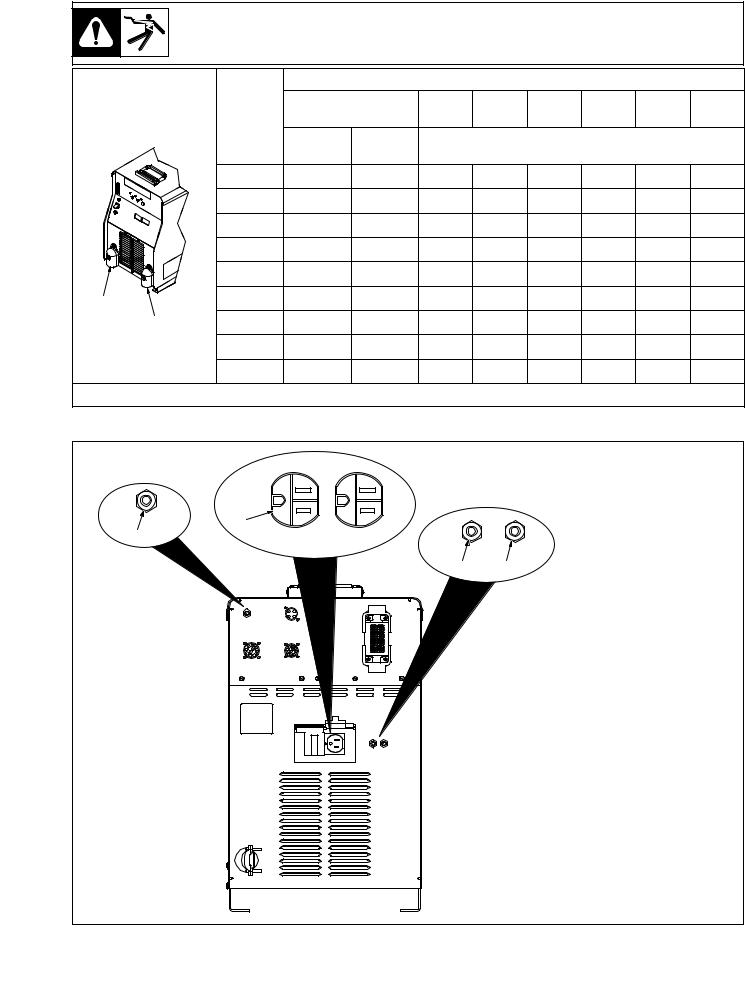
3-5. Weld Output Terminals And Selecting Cable Sizes
|
|
|
Total Cable (Copper) Length In Weld Circuit Not Exceeding |
|
|||||
|
|
30 m (100 ft) Or Less |
45 m |
60 m |
70 m |
90 m |
105 m |
120 m |
|
|
|
(150 ft) |
(200 ft) |
(250 ft) |
(300 ft) |
(350 ft) |
(400 ft) |
||
|
|
|
|
||||||
|
Welding |
10 – 60% |
60 – 100% |
|
|
10 – 100% Duty Cycle |
|
|
|
|
Amperes |
Duty Cycle |
Duty Cycle |
|
|
|
|
||
|
|
|
|
|
|
|
|||
|
100 |
25 |
25 |
25 |
35 |
35 |
50 |
55 |
55 |
|
150 |
35 |
35 |
35 |
50 |
55 |
70 |
95 |
95 |
|
200 |
35 |
35 |
50 |
55 |
70 |
95 |
120 |
120 |
|
250 |
35 |
50 |
55 |
70 |
95 |
120 |
2-70 |
2-70 |
|
300 |
50 |
55 |
70 |
95 |
120 |
2-70 |
2-95 |
2-95 |
Positive |
350 |
55 |
70 |
95 |
120 |
2-70 |
2-95 |
2-95 |
2-120 |
|
|
|
|
|
|
|
|
|
|
(+) |
400 |
55 |
70 |
95 |
120 |
2-70 |
2-95 |
2-120 |
2-120 |
Negative |
|||||||||
(–) |
500 |
70 |
95 |
120 |
2-70 |
2-95 |
2-120 |
3-95 |
3-95 |
|
|||||||||
Ref. 801 914-A |
600 |
95 |
120 |
2-70 |
2-95 |
2-120 |
3-95 |
3-120 |
3-120 |
|
|||||||||
*Weld cable size (mm2) is based on either a 4 volts or less drop or a current density of at least 300 circular mils per ampere. |
S-0007E |
||||||||
3-6. 115 Volts AC Duplex Receptacle And Circuit Breakers
|
|
1 115 V 10 A AC Receptacle |
||
|
|
Power is shared between duplex |
||
|
|
receptacle and internal 14 socket |
||
|
|
receptacle. |
|
|
1 |
|
2 |
Circuit Breaker CB1 |
|
|
3 |
Circuit Breaker CB2 |
||
4 |
|
|||
|
CB1 protects |
duplex receptacle |
||
|
|
|||
|
|
and 115 volts ac portion of internal |
||
2 |
3 |
14 |
socket |
receptacle from |
|
|
overload. |
|
|
|
|
Press button to reset breaker. |
||
|
|
CB2 protects 24 volts ac portion of |
||
|
|
internal 14 socket receptacle from |
||
|
|
overload. |
|
|
|
|
Press button to reset breaker. |
||
|
|
4 |
Circuit Breaker CB1 |
|
|
|
CB1 protects the motor control |
||
|
|
circuitry from overload. If CB1 trips, |
||
|
|
the wire drive motor is inoperative. |
||
Press button to reset breaker.
802 748
OM-196 188 Page 14
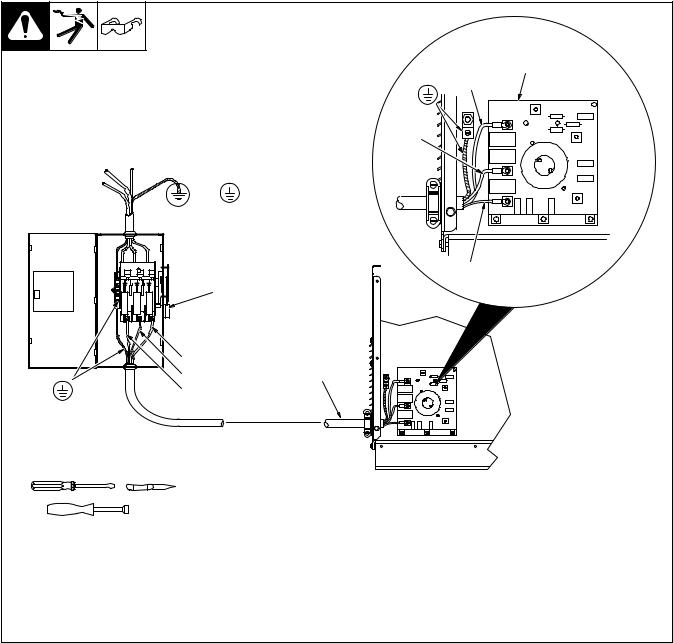
3-7. Electrical Service Guide
|
Three-Phase |
Input Voltage |
|
400 |
|
|
|
Input Amperes At Rated Output |
31 |
|
|
Max Recommended Standard Fuse Or Circuit Breaker Rating In Amperes |
45 |
|
|
Min Input Conductor Size In AWG/Kcmil |
10 |
|
|
Max Recommended Input Conductor Length In Feet (Meters) |
264 (80) |
|
|
Min Grounding Conductor Size In AWG/Kcmil |
10 |
|
|
Reference: 1993 National Electrical Code (NEC). |
S-0092J |
|
|
3-8. Connecting Input Power
Input Filter
Board
L1
L2
=GND/PE
YAlways connect grounding conductor first.
L3
2
L1
L2 |
1 |
L3
Tools Needed:
5/16 in
ssb2.4* 1/94 – ST-801 718 / ST-801 946
YTurn Off welding power source, and check voltage on input capacitors according to Section 5-3 before proceeding.
Check input voltage available at site.
Remove left side panel.
1 Input And Grounding Conductors See Section 3-7.
Install ring terminals of proper size onto input conductors for connection to input filter board terminals (see illustration).
2 Line Disconnect Device
Select type and size of overcurrent protection using Section 3-7. Connect input and grounding conductors to a deenergized line disconnect device.
Reinstall left side panel.
OM-196 188 Page 15
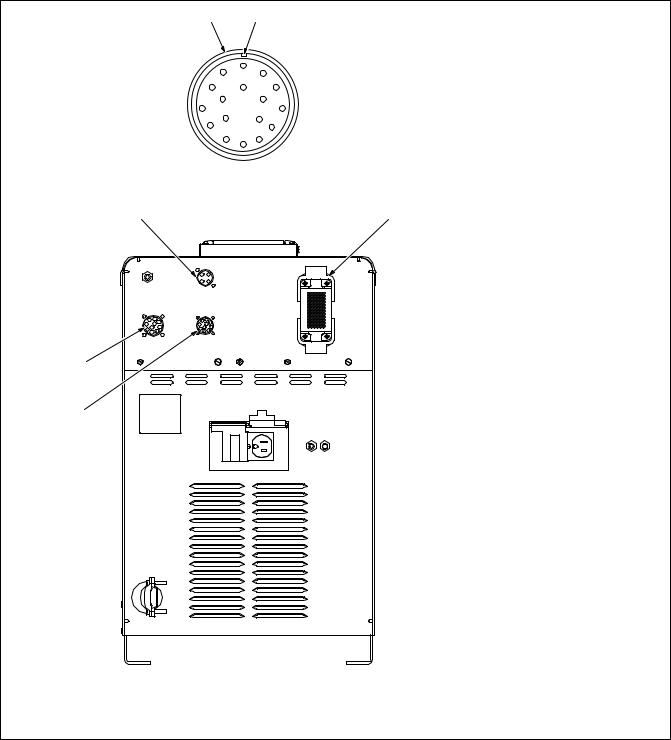
3-9. Rear Panel Connections
4
6
1 |
|
2 |
|
|
B |
A |
|
||
|
M |
|
||
C |
P |
N T |
L |
|
D |
R |
S |
K |
|
J |
||||
|
|
|
||
E
F G H
Example Receptacle
1Receptacle
2Keyway
34-Pin Receptacle (Optional External Voltage Sensing Connection)
To connect interconnecting cord to receptacle, align keyway, insert plug, and tighten threaded collar.
Secure ring terminal on remaining end of cord to work.
4 Peripheral Receptacle
Receptacle provides connection to touch sensor, water flow switch, jog +/–, and n/o relay contacts circuitry.
3 |
5 |
5 Robot Control Receptacle |
|
(Remote Program Select |
|||
|
|
||
|
|
Connection To Robot Control) |
|
|
|
To connect matching interconnect- |
|
|
|
ing cord to one of the above |
|
|
|
receptacles, align keyway, insert |
|
|
|
plug, and tighten threaded collar. |
|
|
|
Connect remaining end of cord to |
|
|
|
matching receptacle on applicable |
|
|
|
equipment (see Section 3-4). |
|
|
|
6 10-Socket Receptacle (Wire |
|
|
|
Feed/Shielding Gas Control |
|
|
|
Connection To Motor Drive |
|
|
|
Assembly) |
Ref. S-0003-A / 802 748
OM-196 188 Page 16

3-10. Peripheral Receptacle Functions
A K
B J M
C L H
D E F
Function |
Socket |
Socket Information |
|
A |
Contact closure to B dependent upon state of |
|
|
programmed output (see Section 14-5). The closure |
|
|
between A and B can carry a maximum of 0.6 |
Programmable |
|
amps at 125 VAC; or a maximum of 0.6 amps at |
|
110 VDC. |
|
Output Relay Con- |
|
|
tacts |
B |
Contact closure to A dependent upon state of |
|
||
|
|
programmed output (see Section 14-5). See socket |
|
|
A information for current carrying capacity of |
|
|
closure. |
|
C* |
Circuit common. |
Purge |
D |
Contact closure to C completes 24 volts dc |
|
||
|
|
solenoid circuit to purge shielding gas line. |
|
E |
Contact closure to F indicates coolant flow switch is |
Coolant Flow |
|
closed and recirculating coolant system is |
Switch Input |
|
operational. |
Signal |
|
|
|
F* |
Circuit common. |
Jog + |
H** |
Contact closure to circuit common advances |
|
|
welding wire at wire drive assembly. |
Jog – |
J** |
Contact closure to circuit common retracts welding |
802 748 |
|
wire at wire drive assembly. |
|
|
KContact closure to L energizes Touch Sensor circuitry.
Touch Sensor ON |
L* |
Circuit common. |
|
|
|
And Output Signal |
M{ |
Part touched is selectable for either 0 volts dc |
|
||
|
|
(common) or +24 volts dc (see Section 3-12). |
|
|
Part touched +24 volts dc output signal referenced |
|
|
to circuit common is factory default setting. |
*Circuit common is same electrical reference point.
**Speed of Jog + and Jog – is at setup value for Jog IPM parameter.
{ Socket M can be changed to 0 volts dc (common) for part touched output signal (see Section 3-12).
Note: A customer supplied matching amphenol plug [Miller Part No. 194 847 (Amphenol Part No. MS3106A20-33P and strain relief clamp
AN3057-12)] is required to use peripheral receptacle.
OM-196 188 Page 17

3-11. Touch Sensor Operation
The touch sensor feature allows the robot to locate a weldment using the wire feed system and welding power source. Voltage sense leads provide a path for touch sensor voltage when this feature is turned on at the peripheral receptacle. Turning on touch sensor causes a dc voltage to be present on the welding wire. When welding wire touches the weldment, the voltage sensing circuit closes, and a +24 volts dc output signal is sent to the robot control indicating weldment detection. Touch sensor dc voltage on the welding wire will vary from 60 to 150 volts dc depending on the welding power source. As soon as touch sensor turns on, DANGER SENSOR ON appears on the front panel display.
3-12. Touch Sensor Board PC18 Switch S1 Settings
Y WARNING: One of S1 switches must be ON and the other must be OFF.
Top View
1
1Touch Sensor Board PC18
2Switch S1
When S1 switch 1 is On, output is
+24 volts dc (factory default).
When S1 switch 2 is On, output is common.
2
Front |
212 321-A |
OM-196 188 Page 18
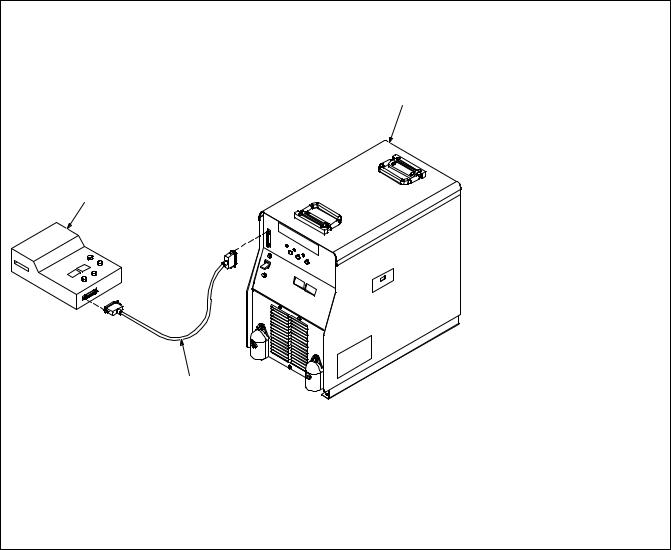
3-13. Connecting Setup Pendant To Welding Power Source
1
. Disconnect the setup pendant from the welding power source before welding.
YTurn Off welding power source and weld control.
1Welding Power Source
2Interconnecting Cord
3Setup Pendant
To make connections, align plug with receptacle, insert plug, and use thumb screws on receptacle to secure plug.
3
2
802 816
OM-196 188 Page 19

SECTION 4 – OPERATION
4-1. Operational Terms
The following is a list of terms and their definitions as they apply to this interface unit:
General Terms: |
|
Adaptive Pulse Welding |
When the “adaptive pulse” welding process is selected, the unit will attempt to automatically regulate |
|
pulse frequency in order to maintain a constant arc length, regardless of change in welding wire stick- |
|
out. |
Abk (Background Amperage) |
Abk is the low weld current. Background current preheats welding wire and maintains the arc. When |
|
background current is too low, the arc is unstable and hard to maintain. |
Apk (Peak Amperage) |
Apk is the high pulse of welding current. Peak current melts the welding wire and forms a droplet. The |
|
droplet is forced into the weld puddle. |
Vpk (Peak Voltage) |
Arc voltage during peak current phase of the pulse waveform. This determines arc length during |
|
adaptive pulse welding. |
Inductance |
In short circuit GMAW welding, an increase in inductance will decrease the number of short circuit |
|
metal transfers per second (provided no other changes are made) and increase the arc-on time. The |
|
increased arc-on time makes the pool more fluid. |
PPS (Pulses Per Second) |
PPS, pulse rate, and frequency (Hz) are used interchangeably. A PPS or pulse rate of 60 Hz means |
|
60 pulses of current are produced each second. |
PWms (Pulse Width in Milliseconds) |
PWms is the time spent at peak current (1.2 ms is .0012 seconds). This time must be long enough to |
|
form a droplet of welding wire. The stiffness or fluidity of the molten weld puddle is controlled by |
|
PWms. |
Synergic |
Synergic refers to the unit’s ability to use preprogrammed pulse parameters to determine the actual |
|
pulse settings of Peak Amperage, Background Amperage, Pulse Frequency and Pulse Width at any |
|
specific wire feed speed setting. |
Trim |
Term used to represent arc length adjustments in pulse programs. Increasing trim increases the ac- |
|
tual arc length. Likewise, decreasing trim shortens arc length. Trim is replaced by volts in MIG pro- |
|
grams. |
Setup Pendant Terms: |
|
Card Mode |
Is used to select use of the optional data card storage and retrieval capabilities. |
Process Mode |
Is used to select the type of process to be used, including Pulse, Adaptive Pulse, or Mig. |
Sequence Mode |
Is used to select and program the weld sequences which include preflow, run-in, weld, crater, |
|
burnback, and postflow. |
Setup Screen Terms: |
|
Access Code |
NOTE: The optional Data Card is required to activate this feature. With code off, access to the setup |
|
displays is not restricted. With code on, the operator must know and enter the access code to access |
|
or change any of the setup displays. |
|
To use code, press Parameter Select button to enter access code. When the correct letter is entered, |
|
the indicator automatically moves to the next character. When the final access code letter is entered, |
|
the display automatically changes to the initial setup display. |
Arc Start |
NOTE: Do not use the Hot Start setting for .035 in (9 mm) or smaller wire. Use the Hot Start mode for |
|
pulse welding with 450 Ampere Inverter Model when high initial weld current is necessary to start |
|
large diameter welding wires. When in Hot Start, the 450 Ampere Inverter Model starts the arc in the |
|
CV mode and switches to CC once the arc is started. Do not use Hot Start unless using 450 Ampere |
|
Inverter Model. |
Arc Time |
Allows actual arc time up to 9,999.99 hours and weld cycles up to 999,999 to be accumulated and |
|
displayed on the digital display, and can be reset to zero as required. |
Mig Type (Voltage |
With DVC Voltage Correction On, the unit uses closed-loop control based on voltage feedback to |
Correction) |
maintain set voltage parameters. With DVC Voltage Correction Off, feedback from the arc is not used |
|
for closed-loop feedback to maintain voltage parameters. Feedback from the arc is still used for other |
|
functions. |
Name Feature |
When using the optional Data Card and turning the name feature on, programs written to the card can |
|
be identified by name, number, job number, etc. |
Program Reset |
By selecting program reset in the memory reset mode, the unit defaults to original factory program |
|
settings for the program last active. All other program and setup information remains the same. |
Range |
The interface requires that the voltage and amperage range of the welding power source be entered. |
|
Obtain this information from the welding power source Owner’s Manual. |
Security |
NOTE: The optional Data Card is required to activate this feature. Is used to limit what the operator |
|
can control. This includes accessing the number of the program, 1 through 8, and the range of weld- |
|
ing parameters within the program. |
Software Screen |
Selection of this function will display the software version of the unit. When talking with factory service |
|
personnel, this number may be required. |
OM-196 188 Page 20 |
|

System Reset |
By selecting system reset in the memory reset mode, the unit defaults to original factory settings for |
|||||||||||||||||||||||||||||||||||||||||||||
|
|
|
|
|
all programs and all set up excluding System, Arc Time, and Model Type. |
|||||||||||||||||||||||||||||||||||||||||
Voltage (Control Feedback) |
Allows voltage to be monitored at the output terminals by two methods. This can be selected through |
|||||||||||||||||||||||||||||||||||||||||||||
|
|
|
|
|
the internal connections of the unit, or through the unit’s external voltage sense lead. |
|||||||||||||||||||||||||||||||||||||||||
|
|
|
|
|
When using the V. Sense setting, arc voltage feedback is through the voltage sense leads connected |
|||||||||||||||||||||||||||||||||||||||||
|
|
|
|
|
to the feeder. Use this setting when there is more than 50 ft (15 m) of weld cable used. |
|||||||||||||||||||||||||||||||||||||||||
Arc Start/Volt Sense Shutdown |
When this feature is on, the system immediately shuts down if no arc voltage is sensed. An error |
|||||||||||||||||||||||||||||||||||||||||||||
|
|
|
|
|
message is displayed. When this feature is off, wire feeds even when there is no arc voltage sensed. |
|||||||||||||||||||||||||||||||||||||||||
Wire Feed Mode |
Allows the selection of inches per minute or meters per minute for wire feed speed. This mode is also |
|||||||||||||||||||||||||||||||||||||||||||||
|
|
|
|
|
used to select motor type; standard speed, low speed, or high speed. |
|||||||||||||||||||||||||||||||||||||||||
4-2. Lower Front Panel Controls |
|
|
|
|
|
|
|
|
|
|
|
|
|
|
|
|
|
|
|
|
|
|||||||||||||||||||||||||
1 |
2 |
|
|
|
|
|
|
|
|
|
|
|
|
|
|
3 |
|
|
|
|
|
|
|
|
|
|
|
|
|
|
|
|
||||||||||||||
|
|
|
|
|
|
|
|
|
|
|
|
|
|
|
|
|
|
|
|
|
|
|
|
|
|
|
|
|
|
|
|
|
|
|
||||||||||||
|
|
|
|
|
|
|
|
|
|
|
|
|
|
|
|
|
|
|
|
|
|
|
|
|
|
|
|
|
|
|
|
|
|
|
|
|
|
|
|
|
|
|
|
|
|
|
|
|
|
|
|
|
|
|
|
|
|
|
|
|
|
|
|
|
|
|
|
|
|
|
|
|
|
|
|
|
|
|
|
|
|
|
|
|
|
|
|
|
|
|
|
|
|
|
|
|
|
|
|
|
|
|
|
|
|
|
|
|
|
|
|
|
|
|
|
|
|
|
|
|
|
|
|
|
|
|
|
|
|
|
|
|
|
|
|
|
|
|
|
|
|
|
|
|
|
|
|
|
|
|
|
|
|
|
|
|
|
|
|
|
|
|
|
|
|
|
|
|
|
|
|
|
|
|
|
|
|
|
|
|
|
|
|
|
|
|
|
|
|
|
|
|
|
|
|
|
|
|
|
|
|
|
|
|
|
|
|
|
|
|
|
|
|
|
|
|
|
|
|
|
|
|
|
|
|
|
|
|
|
|
|
|
|
|
|
|
|
|
|
|
|
|
|
|
|
|
|
|
|
|
|
|
|
|
|
|
|
|
|
|
|
|
|
|
|
|
|
|
|
|
|
|
|
|
|
|
|
|
|
|
|
|
|
|
|
|
|
|
|
|
|
|
|
|
|
|
|
|
|
|
|
|
|
|
|
|
|
|
|
|
|
|
|
|
|
|
|
|
|
|
|
|
|
|
|
|
|
|
|
|
|
|
|
|
|
|
|
|
|
|
|
|
|
|
|
|
|
|
|
|
|
|
|
|
|
|
|
|
|
|
|
|
|
|
|
|
|
|
|
|
|
|
|
|
|
|
|
|
|
|
|
|
|
|
|
|
|
|
|
|
|
|
|
|
|
|
|
|
|
|
|
|
|
|
|
|
|
|
|
|
|
|
|
|
|
|
|
|
|
|
|
|
|
|
|
|
|
|
|
|
|
|
|
|
|
|
|
|
|
|
|
|
|
|
|
|
|
|
|
|
|
|
|
|
|
|
|
|
|
|
|
|
|
|
|
|
|
|
|
|
|
|
|
|
|
|
|
|
|
|
|
|
|
|
|
|
|
|
|
|
|
|
|
|
|
|
|
|
|
|
|
|
|
|
|
|
|
|
|
|
|
|
|
|
|
|
CE
1 Power Switch |
2 Voltmeter (see Section 4-3) |
3 Ammeter (see Section 4-3) |
.The fan motor is thermostatically controlled and only runs when cooling is needed.
|
|
|
|
|
|
|
|
|
|
|
|
Ref. 186 067 |
|
|
|
|
|
|
|
|
|
|
|
|
|
|
|
4-3. Meter Functions |
|
|
|
|
|
|
|
|
|
||||
Note |
The meters display the actual weld output values for approximately three seconds after the arc |
||||||||||||
|
is broken. |
|
|
|
|
|
|
|
|
|
|||
|
|
|
|
|
|
|
|
|
|
|
|
||
Mode |
|
|
Meter Reading At Idle |
|
Meter Reading While Welding |
||||||||
|
|
|
|
|
|
|
|
|
|
||||
|
|
|
V |
|
A |
|
V |
|
A |
||||
MIG |
|
|
24.5 |
|
|
|
|
|
24.5 |
|
|
250 |
|
|
|
|
Preset Volts |
|
Blank |
|
Actual Volts |
Actual Amps |
|||||
|
|
|
|
|
|
|
|
|
|
||||
|
|
|
V |
|
A |
|
V |
|
A |
||||
Pulsed |
|
|
PPP |
|
|
PPP |
|
|
24.5 |
|
|
250 |
|
MIG |
|
|
|
|
|
|
|
|
|
||||
|
|
Pulse Display |
Pulse Display |
|
Actual Volts |
Actual Amps |
|||||||
|
|
|
|
|
|
|
|
|
|
|
|
|
|
OM-196 188 Page 21
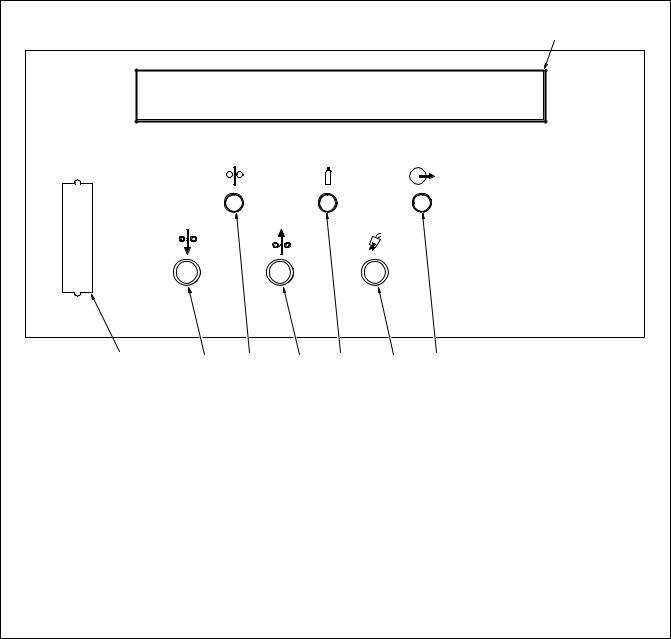
4-4. Upper Front Panel Controls
8
1 |
2 |
3 |
4 |
5 |
6 |
7 |
1 Setup Pendant Receptacle
Receptacle for connecting pendant interconnecting cord.
2Jog Forward Push Button Advances wire out of the gun.
3Wirefeed Indicator LED
LED lights when wire feed motor is energized.
4 |
Jog Reverse Push Button |
7 |
Contactor Indicator LED |
|
Retracts wire up into the gun. |
LED lights when welding power source |
|||
5 |
Gas Indicator LED |
|||
contactor is energized. |
||||
LED lights when gas solenoid is energized. |
8 |
Main Display |
||
6 |
Purge Push Button |
|||
|
|
|||
Momentarily energizes gas solenoid to |
Shows system state, active program, error |
|||
purge air from gun shielding gas line, or to |
messages, weld parameters at idle and |
|||
adjust shielding gas regulator. |
during welding. |
|||
184 197
OM-196 188 Page 22
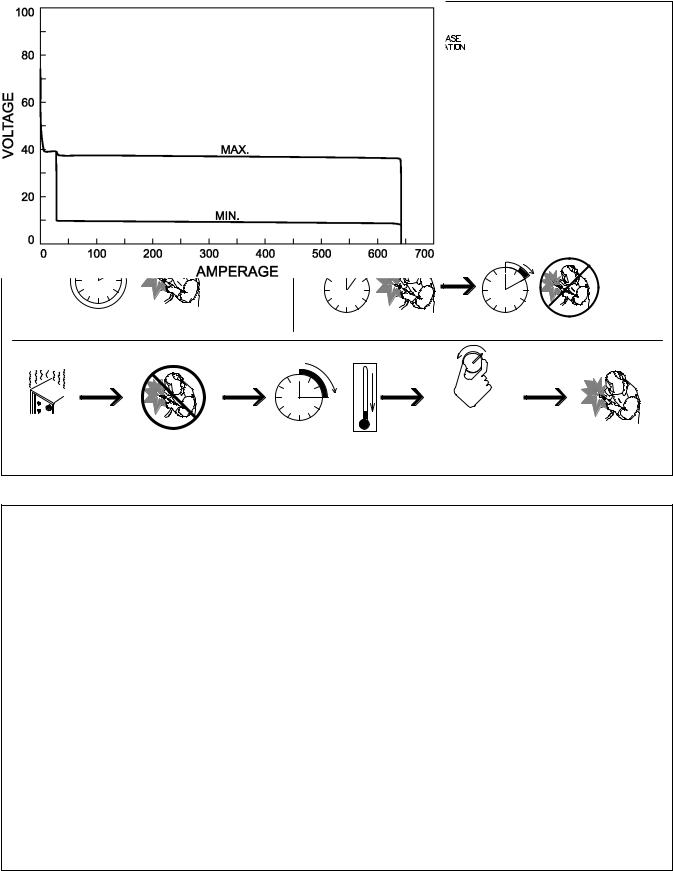
4-5. Duty Cycle And Overheating
Duty Cycle is percentage of 10 minutes that unit can weld at rated load without overheating.
If unit overheats, thermostat(s) opens, output stops, and cooling fan runs. Wait fifteen minutes for unit to cool. Reduce amperage or duty cycle before welding.
Y Exceeding duty cycle can damage unit and void warranty.
100% Duty Cycle At 450 Amperes |
60% Duty Cycle At 565 Amperes |
Continuous Welding |
6 Minutes Welding |
4 Minutes Resting |
Overheating |
0 |
A/V |
|
||
|
15 |
|
|
|
OR |
|
Minutes |
Reduce Duty Cycle |
|
|
duty1 4/95 – 181 560
4-6. Volt-Ampere Curves
Volt-ampere curves show minimum and maximum voltage and amperage output capabilities of unit. Curves of other settings fall between curves shown.
va_curve1 4/95 – 181 562
OM-196 188 Page 23
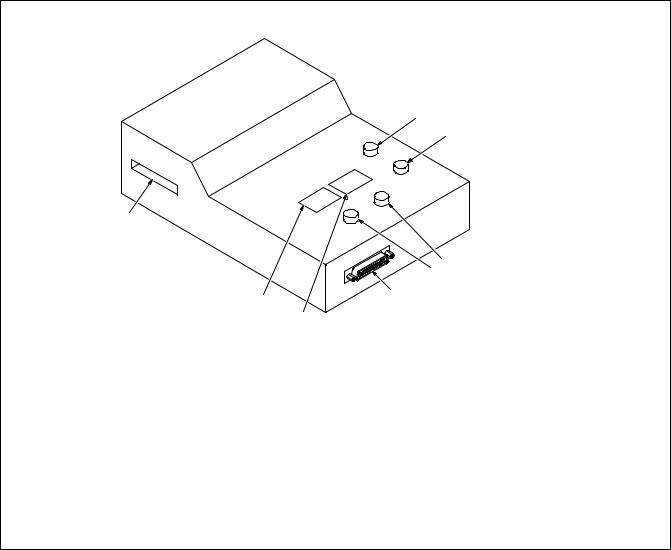
4-7. Setup Pendant Controls
1
2
8
3
4
5
7
6
802 815
1 Increase Button
Works with security feature on welding power source to allow increasing weld parameter values within the allowable range.
2 Decrease Button
Works with security feature on welding power source to allow decreasing weld parameter values within the allowable range.
3 |
Parameter Select Button |
Press button to move indicator in left window |
||
Press button to move indicator in right |
display. |
|||
5 |
Interconnecting Cable Receptacle |
|||
window display, and to make selections in |
||||
setup screens. |
6 |
Parameter Display |
||
4 |
Mode Select Button |
7 |
Mode Display |
|
|
|
8 |
Card Slot |
|
OM-196 188 Page 24
